LG Electronics USA LNN2010IWUM DIGITAL CAR AVN SYSTEM User Manual
LG Electronics USA DIGITAL CAR AVN SYSTEM Users Manual
Users Manual
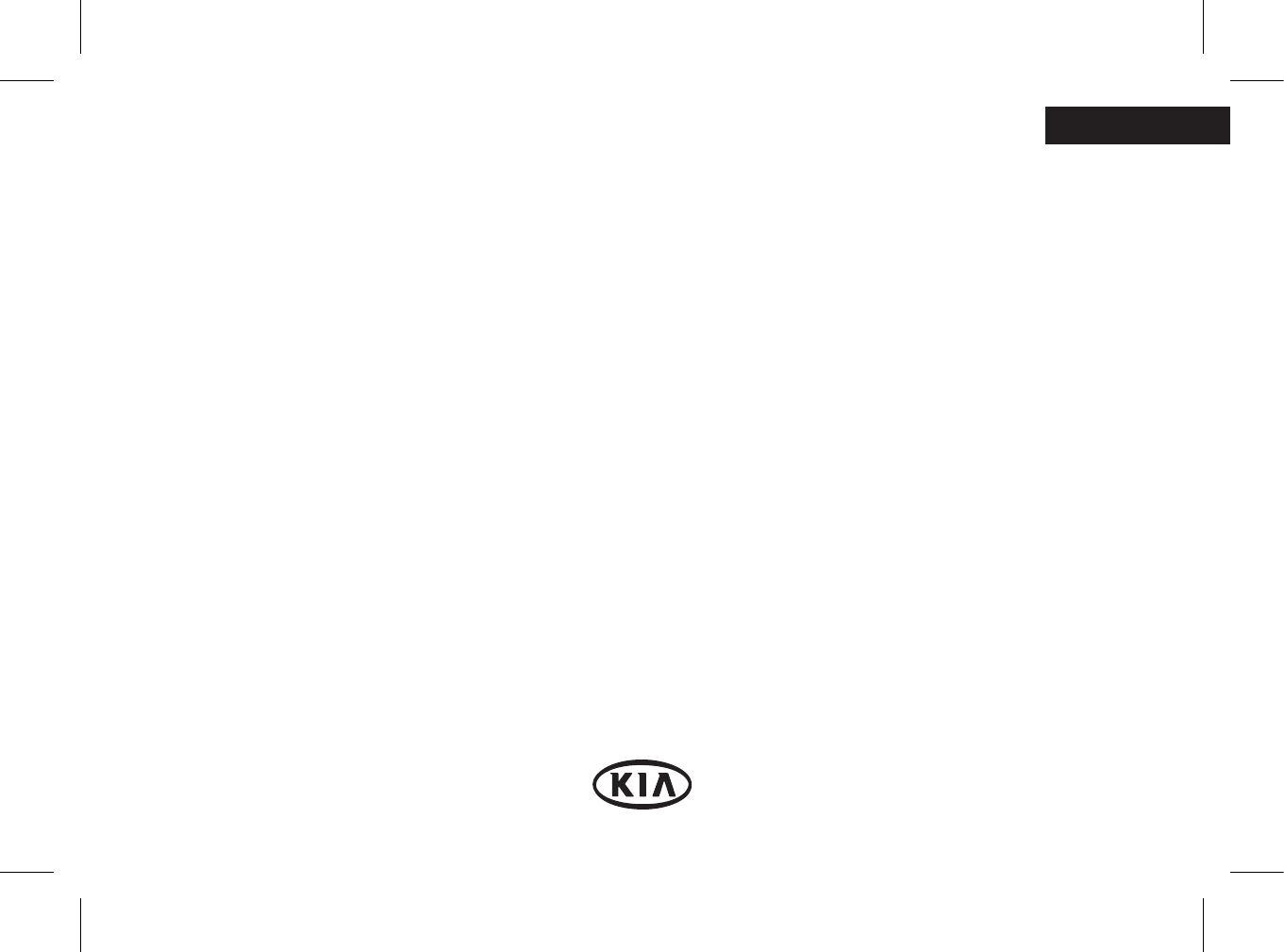
Car Navigation System
OWNER’S MANUAL
SORENTO
Please read this manual carefully before operating your set and retain it for future reference.
Designs and specifications are subject to change without prior notice.
ENGLISH

2
ENG
Thank you for purchasing this Car Navigation system.
This user’s manual explains how to use the KIA Motor Car Navigation system.
Before using the product, read the contents of this user’s manual carefully and use this product safely.
• The screens shown in this manual may dier from the actual screens of the product.
• The design and specication of this product may change without prior notication for product improvement.
• When transferring the vehicle to another individual, include this user’s manual so that the next driver can
continue its use.

Precautions for safety
3
ENG
Safety notes
CAUTION
RISK OF ELECTRIC
SHOCK
DO NOT OPEN
CAUTION: TO REDUCE THE RISK OF
ELECTRIC SHOCK, DO NOT REMOVE THE
COVER (OR BACK). NO USER SERVICEABLE
PARTS INSIDE. REFER SERVICING TO
QUALIFIED SERVICE PERSONNEL.
The lightning ash with the arrowhead symbol
within an equilateral triangle is intended
to alert the user about the presence of
uninsulated dangerous voltage within the
product’s enclosure that may be of sucient
magnitude to constitute a risk of electric shock.
The exclamation point within an equilateral
triangle is intended to alert the user to
the presence of important operating and
maintenance (servicing) instructions in the
literature accompanying the appliance.
Always operate the vehicle in a safe manner.
Do not become distracted by the vehicle while
driving and always be fully aware of all driving
conditions. Do not change settings or any
functions.
Pull over in a safe and legal manner before
attempting such operations.
To promote safety, certain functions are
disabled unless the hand brake is on.
To reduce the risk of electric shock, do not
remove the cover or back of this product.
There are no user-serviceable parts inside.
Refer servicing to qualied service personnel.
To reduce the risk of re or electric shock,
do not expose this product to dripping or
splashing water, rain or moisture.
When driving your vehicle, be sure to keep the
volume of the unit low enough to allow you to
hear sounds coming from the outside.
Do not drop it and avoid heavy impacts at
anytime.
The driver should not watch the monitor while
driving. If the driver watches the monitor while
driving, it may lead to carelessness and cause
an accident.
Precautions for safety
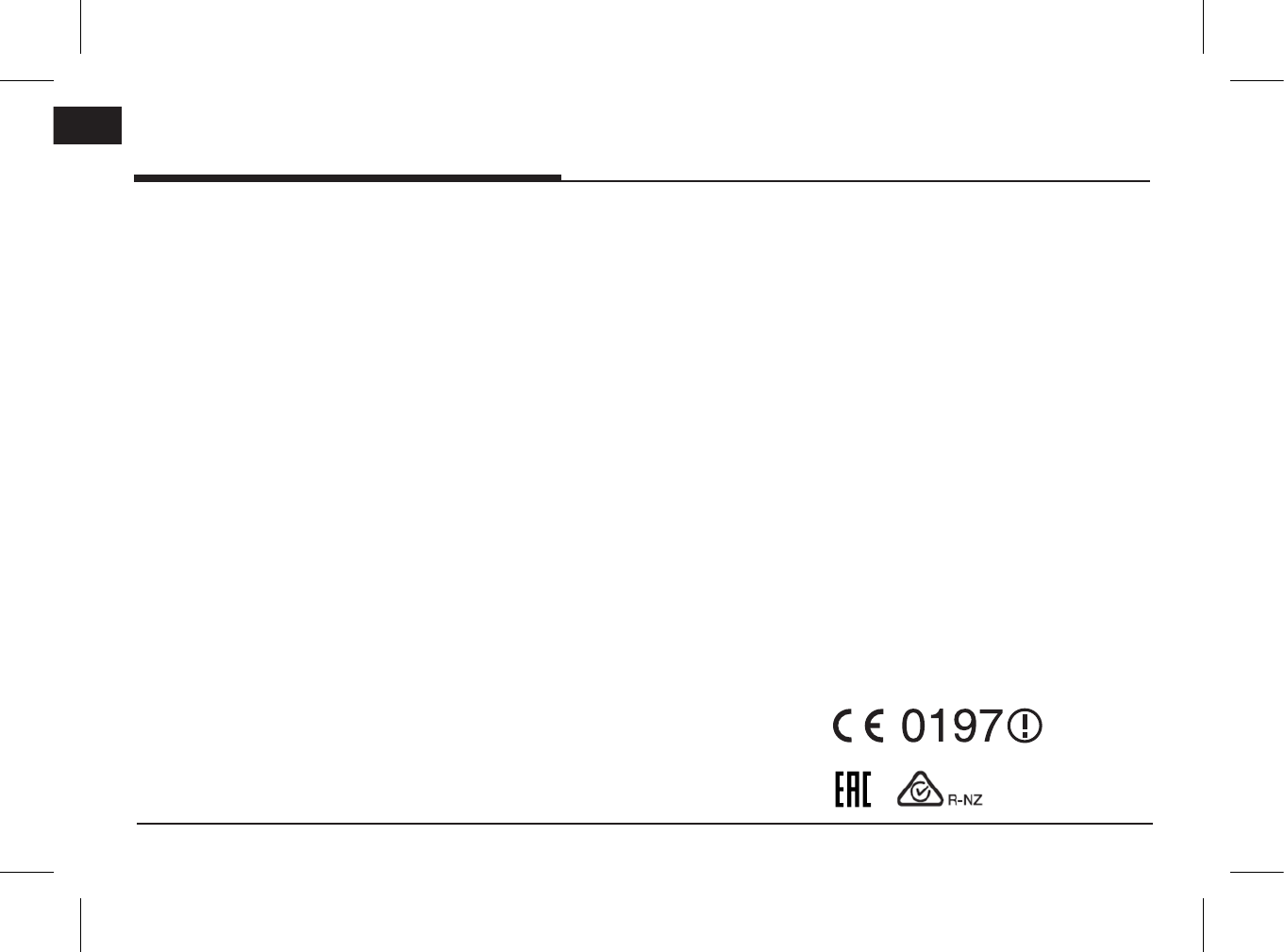
4
ENG
Precautions for safety
WARNING:
• Don’t use a cellular phone when you are
driving. You must stop at a safe place to use
a cellular phone.
• The use of the navigation radio by no means
relieves the driver of his/her responsibilities.
The highway code must always be observed.
Always observe the current trac situation.
• The applicable trac regulations and the
prevailing trac situation always take
precedence over the instructions issued by
the navigation system if they contradict one
another.
• For trac safety reasons, use the navigation
system menus only before starting a journey
or when the vehicle is stationary.
• In certain areas, one-way streets and turn
o and entry prohibitions (e.g. pedestrian
zones) are not recorded. In areas such as
these the navigation system will issue a
warning. Pay particular attention to one-way
streets and turn o and entry restrictions.
• The navigation system does not take the
relative safety of the suggested routes into
consideration.
Road blocks, building sites, height or weight
restrictions, trac or weather conditions
or other inuences which aect the route
safety or travel time are not taken into
consideration for the suggested routes. Use
your own discretion in order to decide on
the suitability of the suggested routes.
• The current legal road trac speed limit
always takes priority over the values saved
on the data. It is impossible to provide an
assurance that the speed values of the
navigation system will always match those
of the current trac regulations in every
situation.
• Always observe the applicable legal speed
limits the trac regulations. The vehicle
speedometer must always be given priority
for display of the vehicle speed.
• Do not rely exclusively on the navigation
system when attempting to locate an
emergency service (hospital, re service
etc.). It cannot be guaranteed that all
available emergency services in your vicinity
are saved in the database. Use your own
discretion and abilities to secure help in
such situations.
CAUTION:
• Do not keep the navigation system running
with the engine stopped. Doing so may
discharge the vehicle battery. When you
use the navigation system, always keep the
engine running.
• When the driver wants to operate the
navigation system, rst park the vehicle in
a safe location and set the parking brake.
Operating the system while driving can
distract the driver and may result in a serious
accident.
• Do not disassemble or modify this system.
If you do, it may result in accidents, re or
electrical shock.
• Some states/provinces may have laws
limiting the use of video screens while
driving. Use the system only where it is legal
to do so.
• Do not use your phone in private mode
when you are driving. You must stop at a
safe location to use it.

5
ENG
Precautions for safety 3
Safety notes � � � � � � � � � � � � � � � � � � � � � � 3
Table of contents 5
General information 7
About USB � � � � � � � � � � � � � � � � � � � � � � � 7
MP3 file Information� � � � � � � � � � � � � � � � 8
Image file Information � � � � � � � � � � � � � � 8
Using iPod Devices � � � � � � � � � � � � � � � � � 8
Precautions upon using iPod ...............8
Supported iPod devices ........................8
Cautions upon using SD Cards � � � � � � � 8
Ejecting and Inserting SD Cards .........8
Usage of SD Cards .................................8
Name of each component 9
Head unit � � � � � � � � � � � � � � � � � � � � � � � � � 9
Steering wheel remote control � � � � � � � �11
Basic operation 12
Starting the system for the first time � � 12
Turning the system on � � � � � � � � � � � � � 12
Turning the system off � � � � � � � � � � � � � 12
Adjusting the volume � � � � � � � � � � � � � � 12
Using the Touch screen � � � � � � � � � � � � � 12
Radio operation (FM/AM) 13
Listening to FM/AM radio� � � � � � � � � � � 13
Opening the station list sorted in alpha-
numerical order � � � � � � � � � � � � � � � � � � � 13
Autostore (AM only) � � � � � � � � � � � � � � � 13
Presetting FM/AM � � � � � � � � � � � � � � � � 14
Saving FM/AM preset .......................... 14
Deleting FM/AM preset ....................... 14
Setting the FM/AM options � � � � � � � � � 14
Scan .......................................................... 14
Sound settings ....................................... 15
USB Operation ����������������������������� 16
Playing USB music � � � � � � � � � � � � � � � � 16
Pause ........................................................ 16
Skip ............................................................ 16
Search ....................................................... 16
Seek .......................................................... 16
List ............................................................. 16
Scan .......................................................... 17
Repeat ...................................................... 17
Shuffle ...................................................... 17
Sound settings ....................................... 17
Viewing USB image � � � � � � � � � � � � � � � 18
Switching to menu screen or full
screen .......................................................18
Skip ............................................................ 18
Zoom in/out ............................................ 18
Rotating image .......................................18
List ............................................................. 19
File info ..................................................... 19
Display settings ...................................... 19
Slideshow interval(sec) ......................... 19
iPod Operation 20
Playing iPod � � � � � � � � � � � � � � � � � � � � �20
Pause .......................................................20
Skip ...........................................................20
Search ...................................................... 20
Seek .........................................................20
List ............................................................20
Setting audiobook playback speed .20
Repeat ...................................................... 21
Shuffle ...................................................... 21
Sound settings ....................................... 21
Auxiliary device operation 22
Playing an AUX source � � � � � � � � � � � � �22
Switching to menu screen or full
screen during video playback ........... 22
Display settings ..................................... 22
Sound settings ...................................... 22
Bluetooth audio 23
Playing Bluetooth audio � � � � � � � � � � � �23
Before playing the Bluetooth audio .23
Starting the Bluetooth audio ............. 23
Pause ....................................................... 23
Skip ........................................................... 23
Table of contents
Table of contents

6
ENG
Sound settings ...................................... 23
Getting started with navigation 24
Precautions for safe driving � � � � � � � � � 24
What is GNSS? � � � � � � � � � � � � � � � � � � � 24
About satellite signals � � � � � � � � � � � � � � 24
Acquiring satellite signals � � � � � � � � � � �24
Initial navigation screen � � � � � � � � � � � � 24
(Refer to the separate navigation manual
for more detailed operation)
Bluetooth® Wireless Technology 25
Before Using the Bluetooth Handsfree 25
What is Bluetooth Wireless
Technology? ...........................................25
Precautions for Safe Driving .............. 25
Cautions upon Connecting Bluetooth
Phone .......................................................25
Pairing and connecting the unit and a
Bluetooth phone � � � � � � � � � � � � � � � � � �26
When no phones have been paired 26
When a phone is already paired ...... 26
When pairing additional device ........ 26
Bluetooth help ....................................... 27
Disconnecting the connected phone
..28
Deleting Bluetooth Devices ................28
Making a call by entering phone number
28
Making a call by redialing � � � � � � � � � � �28
Answering/Rejecting a call � � � � � � � � � � 29
Switching call to the mobile phone � � � 29
Ending a call � � � � � � � � � � � � � � � � � � � � � 29
Using the menu during a phone call � �29
Calling list � � � � � � � � � � � � � � � � � � � � � � �30
Making a call from calling list ...........30
Contacts � � � � � � � � � � � � � � � � � � � � � � � �30
Making a call from contacts ..............30
Updating mobile phone contacts ....30
Searching for contacts ......................... 31
Favourites � � � � � � � � � � � � � � � � � � � � � � � 31
Calling Favourites ................................... 31
Adding as a Favourite .......................... 31
Deleting favourites ................................32
Changing the favourites name ......... 32
Bluetooth settings � � � � � � � � � � � � � � � � �32
Settings 33
[Settings] menu overview � � � � � � � � � � �33
Sound � � � � � � � � � � � � � � � � � � � � � � � � � � 33
Display � � � � � � � � � � � � � � � � � � � � � � � � � �34
Bluetooth � � � � � � � � � � � � � � � � � � � � � � � �34
Paired devices ....................................... 34
Ringtone ..................................................34
Change passkey ....................................35
Rename device .................................... 35
System � � � � � � � � � � � � � � � � � � � � � � � � � � 35
Language ................................................35
Keyboard ................................................. 36
Clock ........................................................ 36
Factory settings ..................................... 36
Using rear camera - Option 37
About Rear Camera � � � � � � � � � � � � � � � 37
Turning on the rear camera ................37
AVM (Around View Monitor)
- Option 38
About AVM (Around View Monitor) � � �38
Operating front AVM � � � � � � � � � � � � � �38
Operating rear AVM � � � � � � � � � � � � � � �38
AVM setting � � � � � � � � � � � � � � � � � � � � � 39
Warning display � � � � � � � � � � � � � � � � � � � 39
Driver's door open indicator ..............39
Front passenger's door open indicator
.. 39
Trunk open indicator .......................... 39
Side mirror folding indicator .............. 39
Before thinking there is a product
defect 40
Troubleshooting 43
Trademarks and Licenses 45
Bluetooth® Wireless Technology ....... 45
iPod® .........................................................45
OPEN SOURCE SOFTWARE
NOTICE....................................................45
Specification 46
Table of contents

7
ENG
General information
About USB
• Files that are not standard format les will
not be played.
• For MP3/WMA les, only music les with
compression rates between 8 Kbps ~ 320
Kbps can be played.
• Heed caution to static electricity when
connecting/disconnecting external USB
devices.
• Encoded MP3 Players will not be recognised
when connected as an external device.
• When connecting an external USB device,
the device may not properly recognise the
USB is in some states.
• Only USB devices formatted as FAT 12/16/32
are supported, and NTFS le system is not
supported.
• Some USB devices may not be supported
due to compatibility issues.
• Avoid contact between the USB connector
with bodily parts/foreign objects.
• Repeated connecting/disconnecting of USB
devices within short periods of time may
result in product malfunction.
• The amount of time required to recognise
the external USB device may dier
depending on the type, size or le formats
stored on the USB. Such dierences
in required time are not indications of
malfunction.
• The device may not recognise the USB
device if separately purchased USB hubs and
extension cables are being used. Connect
the USB directly with the multimedia
terminal of the vehicle.
• When application programmes are installed
to specic USBs, les may not properly play.
• The device may not operate normally if MP3
Players, cellular phones, digital cameras
or other electronic devices (USB devices
not recognised as portable disk drives) are
connected with the device.
• Charging through the USB may not work for
some mobile devices.
• The device may not support normal
operation when using a USB memory type
besides Metal Cover Type USB Memory.
• The device may not support normal
operation when using formats such as HDD
Type, CF or SD Memory.
• The device will not support les locked by
DRM (Digital Rights Management).
• USB memory sticks used by connecting an
Adaptor (SD Type or CF Type) may not be
properly recognised.
General information

8
ENG
General information
MP3 file Information
• Sampling frequency: 8 ~ 48 KHz (MP3), 22.5
~ 48 KHz (WMA)
• Bit rate: 8 ~ 320 Kbps (MP3), 20 ~ 320 Kbps
(WMA)
• Version: v2, v7, v8, v9
• Playable le format: “.mp3”/ “.wma”
Image file Information
Playable le format: “.bmp”, “.jpg”, “.gif”, “.png”, “.tif”
(Max 1.5MB)
Using iPod Devices
Precautions upon using iPod
iPod® is a registered trademark of Apple Inc.
• Some iPods with unsupported
communication protocols may not properly
operate with the system.
• If the iPod malfunctions due to an iPod device
defect, reset the iPod and try again. (To learn
more, refer to your iPod manual.)
• During ACC ON state, connecting the iPod
through the iPod cable (The cable that is
supplied when purchasing iPod/iPhone
product.) will charge the iPod through the
system.
• The use of genuine iPod cables supplied by
Apple is recommended. (The use of other
products may result in noise or abnormal
operation.)
• Within iPhones, streaming audio and iPod
control may occasionally conict. If problems
persist, remove the iPhone and connect again.
• Use iPod with complete synchronisation to
iTunes. Unauthorised song addition may cause
abnormal operation.
• If iPod and Bluetooth are connected
simultaneously with the same iPhone, you
cannot use Bluetooth audio function.
• If iPod touch or iPhone is used, iOS4.2 or a
later version is recommended.
Supported iPod devices
iPhone5C, iPhone5S, iPhone5
iPhone4S, iPhone4
iPhone3GS, iPhone3G, iPhone
iPod Touch (1st through~ 5th generation)
iPod Nano
iPod Classic6.5G, iPod Classic6G
iPod Classic5G (Video)
Cautions upon using SD Cards
Ejecting and Inserting SD Cards
• Ejecting and inserting SD cards while the
system is operating may result in SD Card
or System errors. To eject or insert the SD
card, rst turn o the system and the vehicle
should be o status.
• Eject/insert SD cards only to update the
map with a new version.
• When a SD Card with the new version
is inserted, then the system will reboot
automatically.
Usage of SD Cards
• The SD Card is formatted to include only
Map and new Navi S/W.
• The SD Card cannot be used to save and
play Music.
• Do not add, delete or format les within the
SD Card.
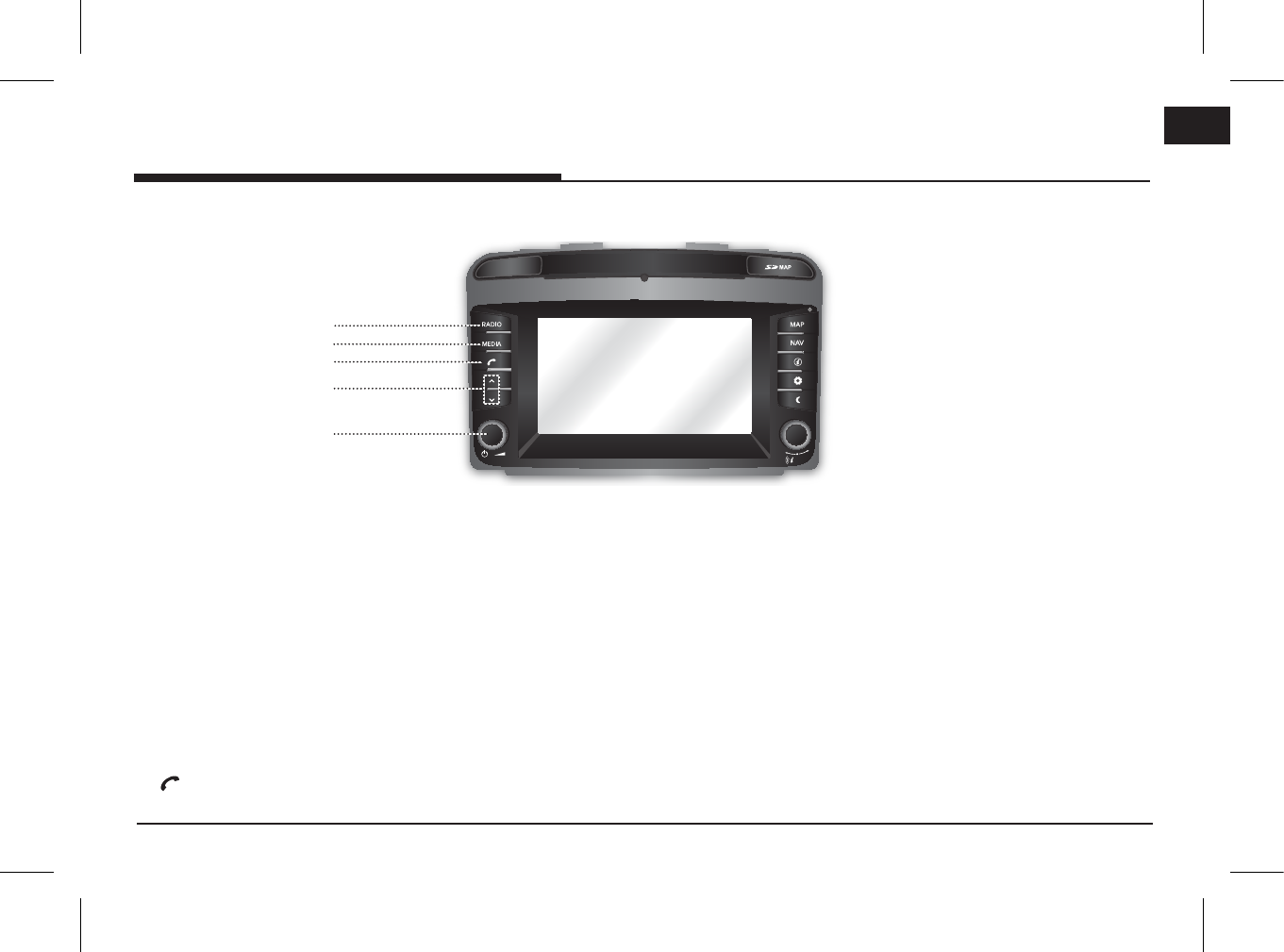
Name of each component
9
ENG
Name of each component
Head unit
1
4
2
5
3
1. RADIO button
Converts to the last played radio mode (FM/
AM).
When system is already displaying the
radio screen then each time the button is
pressed, the mode is changed in the order
FM -> AM -> FM.
2. MEDIA button
Press to select a media source: [USB Music]/
[iPod]/ [Bluetooth Audio]/ [AUX]
3. button
Press to operate Bluetooth Hands-Free function.
4. S/W button
-
When it is pressed shortly (less than 0.8 sec.)
•FM/AM mode: plays previous/next
station.
•MEDIAmode:playsprevious/nextle.
- When it is pressed and held (0.8 sec. or
longer)
•FM/AM mode: tunes continuously along
the band until the button is released.
Then tuning is stopped at the next
available station.
•MEDIAmode:rewindsorfastforwards
the le.
5. •1 button
-Power on
Press this button in system OFF status.
-Power o
Press this button in system ON status.
•Volumecontrolknob(-)
Turn counterclockwise or clockwise to
control volume.
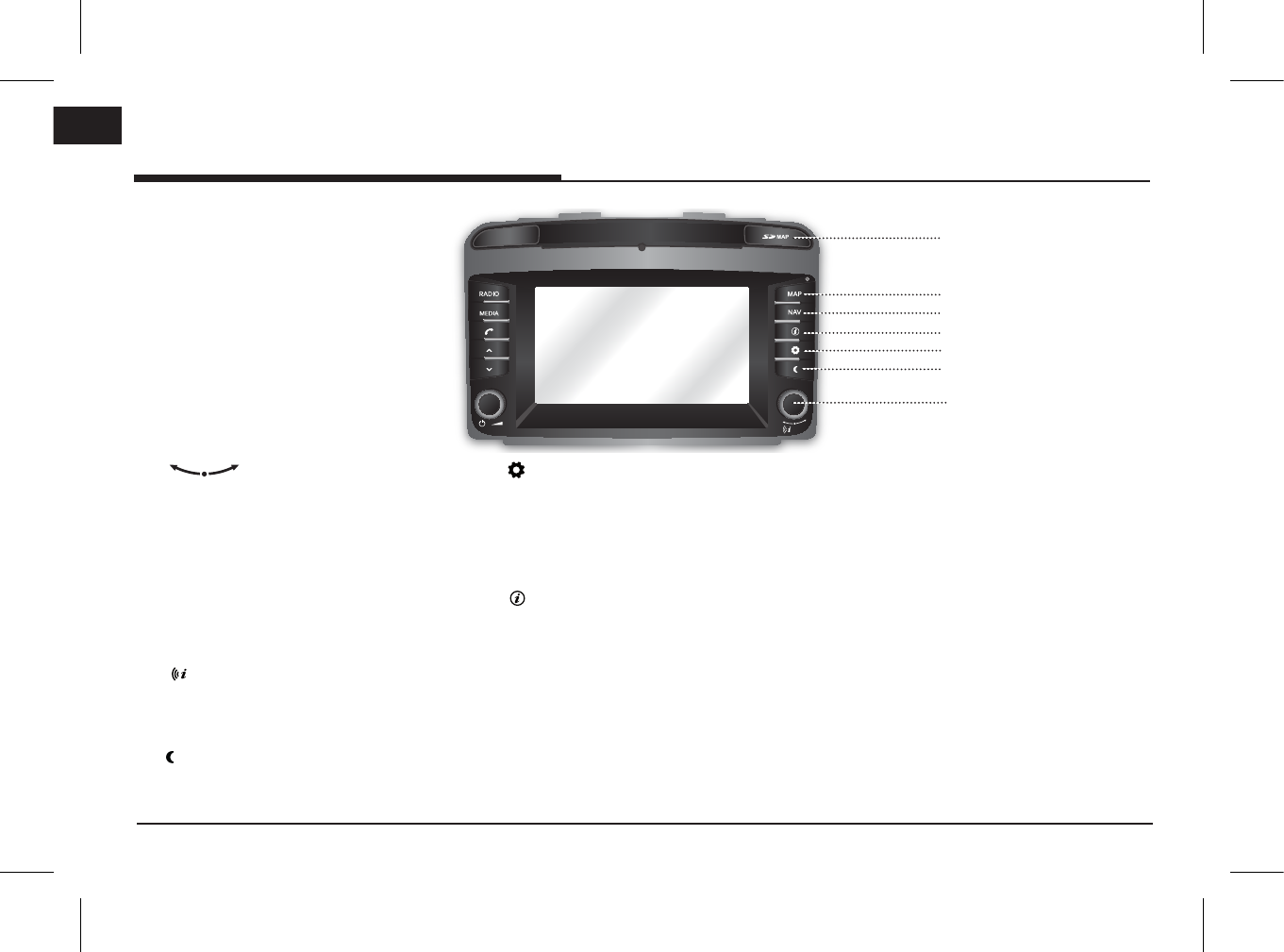
10
ENG
10
11
12
7
9
6
8
Name of each component
6. • button
-FM/AM mode: turn left/right to tune
manually (FM/AM) or to search for a
desired station and then press it.
-MEDIA mode:
turn
left/right
to search for
the desired le and press it.
-Navigation mode:
turn
left/right
to
change the map scale on the map
screen.
• button
Press to repeat the voice guidance on the
map screen.
7. button
Press to turn the screen on or o.
8. button
- Press to move to the [Settings] menu.
-
Press and hold to check Software version,
Bluetooth version, Navigation version, Map
database version, and Firmware version.
9. button
• Route Info
• Alternatives
10.NAVbutton
Press to move to the navigation menu
screen.
11. MAP button
Press to display the map screen of the
current location when in a dierent mode.
12.CoverforprotectingSDcard(SDcard
insertslot)
Insert the SD card into the slot.
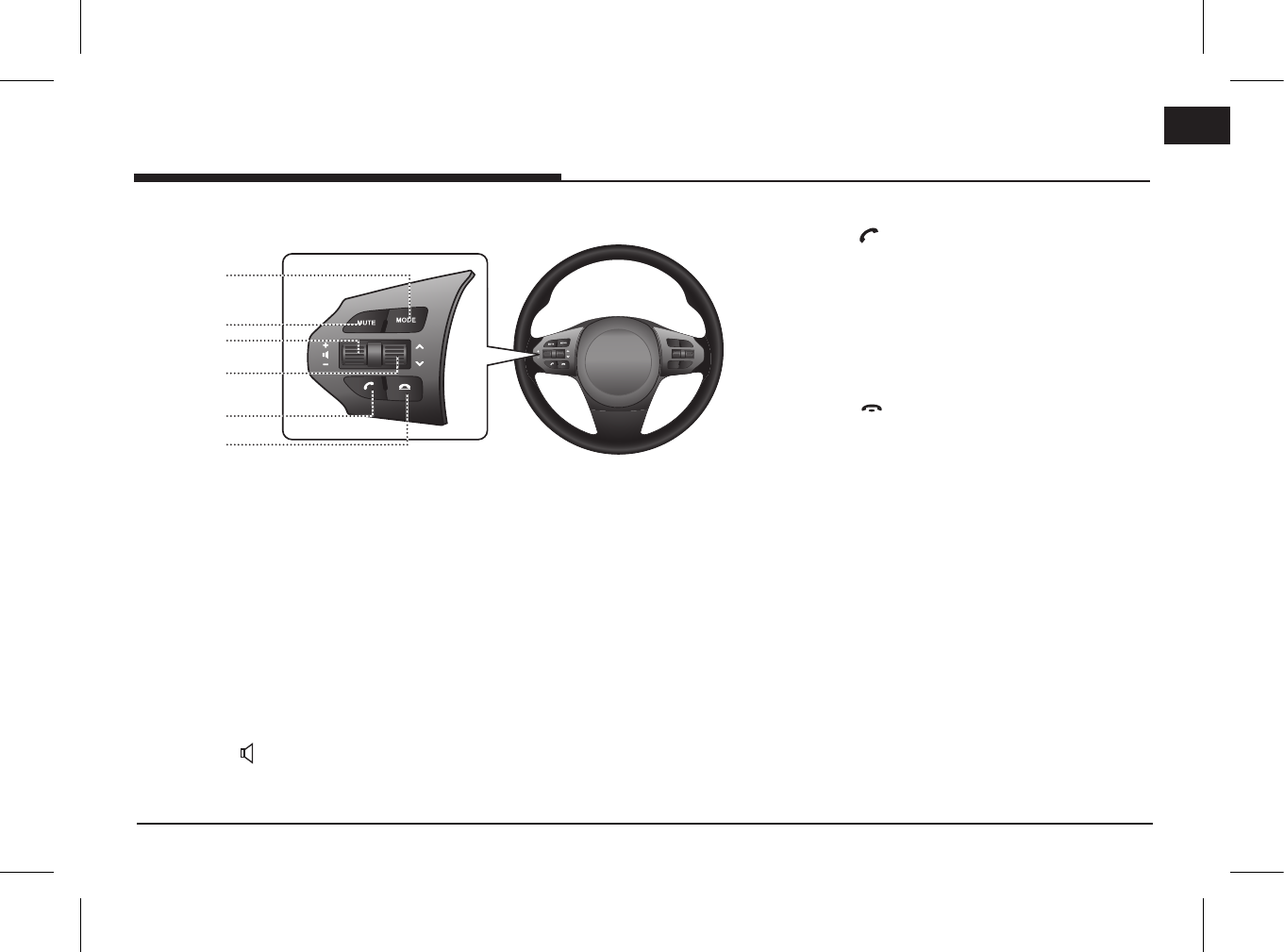
11
ENG
Steering wheel remote control
1
5
6
2
3
4
Name of each component
1. MODE button
• Each time this button is pressed, the
Radio or Media mode is changed.
• If the media is not connected,
corresponding modes will be disabled.
2. MUTE button
Press to mute the sound.
3. Volume(+ -) button
Increases or decreases the volume level.
4. Seekup/down(W/S) button
- When it is pressed shortly (less than 0.8
sec.)
•FM/AM mode: plays previous/next
station.
•MEDIA mode: plays previous/next le.
- When it is pressed and held (0.8 sec. or
longer)
•FM/AM mode: tunes continuously
along the band until the button is
released. Then tuning is stopped at the
next available station.
• MEDIA mode: rewinds or fast forwards
the le.
5. button
Press to operate Bluetooth Hands-Free
function.
•Presstoacceptacall.
•Presstomakeacallfromlastcalls.
• Pressandholdforredialing.
6. button
Press to hang up a call.
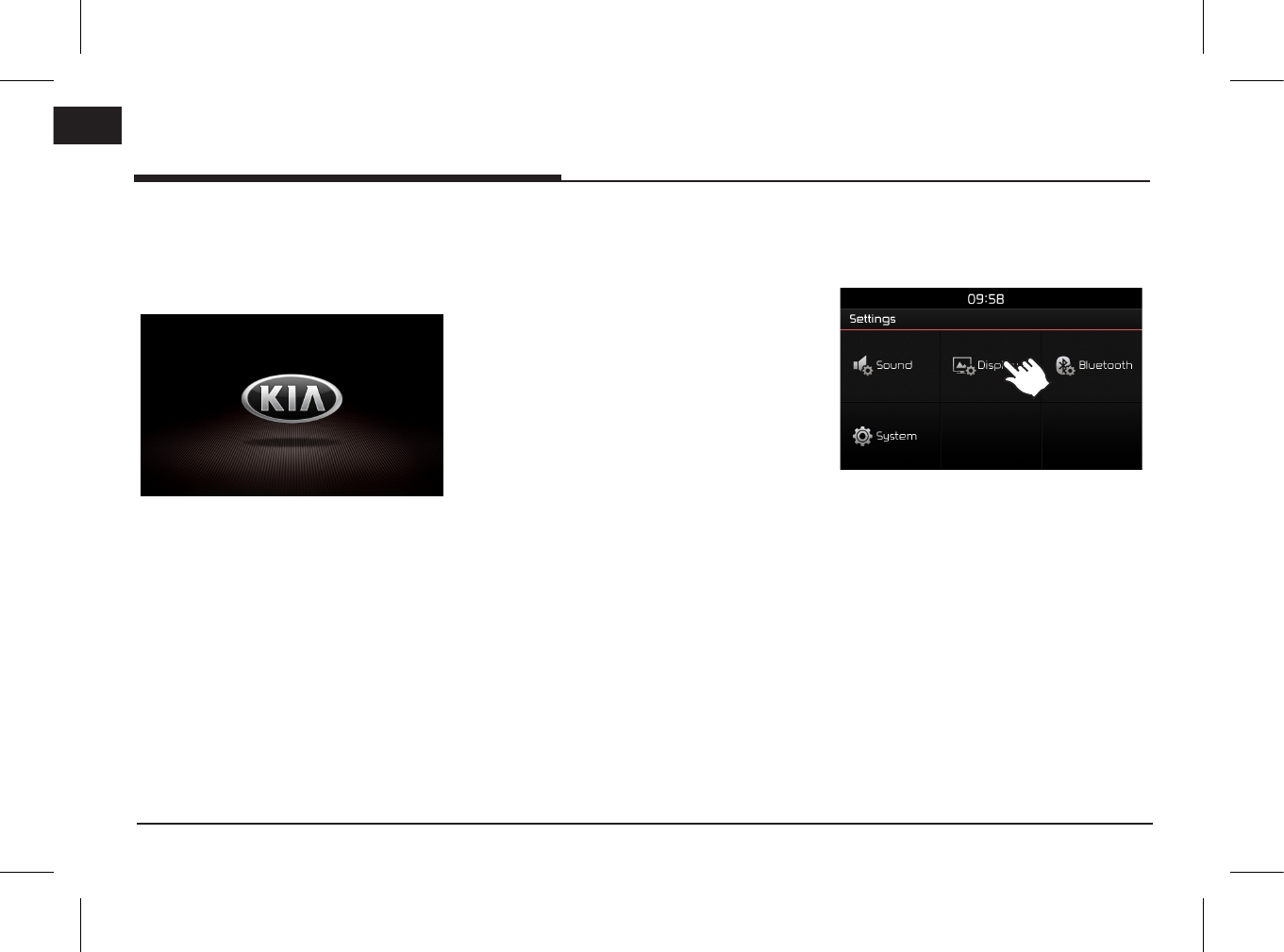
12
ENG
Basic operation
Starting the system for the
first time
1. Press the engine start button or set the
ignition key to On or ACC.
2. The system memorises the last mode
that was played. The last mode is saved
in the memory even if the ignition switch
is placed in the OFF position. When the
ignition switch is placed in the ACC or
ON position, the mode is automatically
recalled.
Turning the system on
Press “1” on the head unit in system OFF
status.
, Note
Pay attention to the volume setting when
turning the system on. A sudden output of
extreme volume upon turning the system on
could lead to hearing impairment. Adjust the
volume to a suitable levels before turning o
the system.
Turning the system off
Press “1” on the head unit in system ON status.
Adjusting the volume
Rotate the volume control knob (-) on the
head unit.
, Note
When you turn the system o, the current
volume level is automatically memorised.
Whenever you turn the system on, it operates
at the memorised volume level.
Using the Touch screen
Press the desired menu on the screen to select
a menu.
Basic operation

13
ENG
Radio operation (FM/AM)
Listening to FM/AM radio
1. Press "RADIO" on the head unit.
2. Press [Radiow] > [FM] or [AM] on the
screen.
The FM/AM screen of the most recent
listened station is displayed.
, Note
Each time the "RADIO" button on the head
unit is pressed, the mode is changed in the
order FM -> AM -> FM.
3. Autotuning:
•Press [
C
/
V
] on the screen.
-Plays previous/next station.
• Press and hold [
C
/
V
] on the screen.
-
Changes continuously the station until
the button is released.
Manualtuning:
Turn " " (counter)clockwise.
-The frequency moves up and down
accordingly.
Presettuning:
Press [Preset]. Press the preset numbers of
the desired broadcast station.
Opening the station list sorted
in alphanumerical order
You can see station list with superior reception.
1. Select the band (FM, AM) you want.
2. Press [List].
, Note
• Rotate “ ” to scroll up or down.
• Press [ ] to move to the previous screen.
Autostore (AM only)
This function lets you automatically store the
strong broadcast stations.
1. Select the AM band.
2. Press [List].
3. Press [ ].
, Note
• Rotate “ ” to scroll up or down.
• Press [ ] to move to the previous screen.
Radio operation (FM/AM)
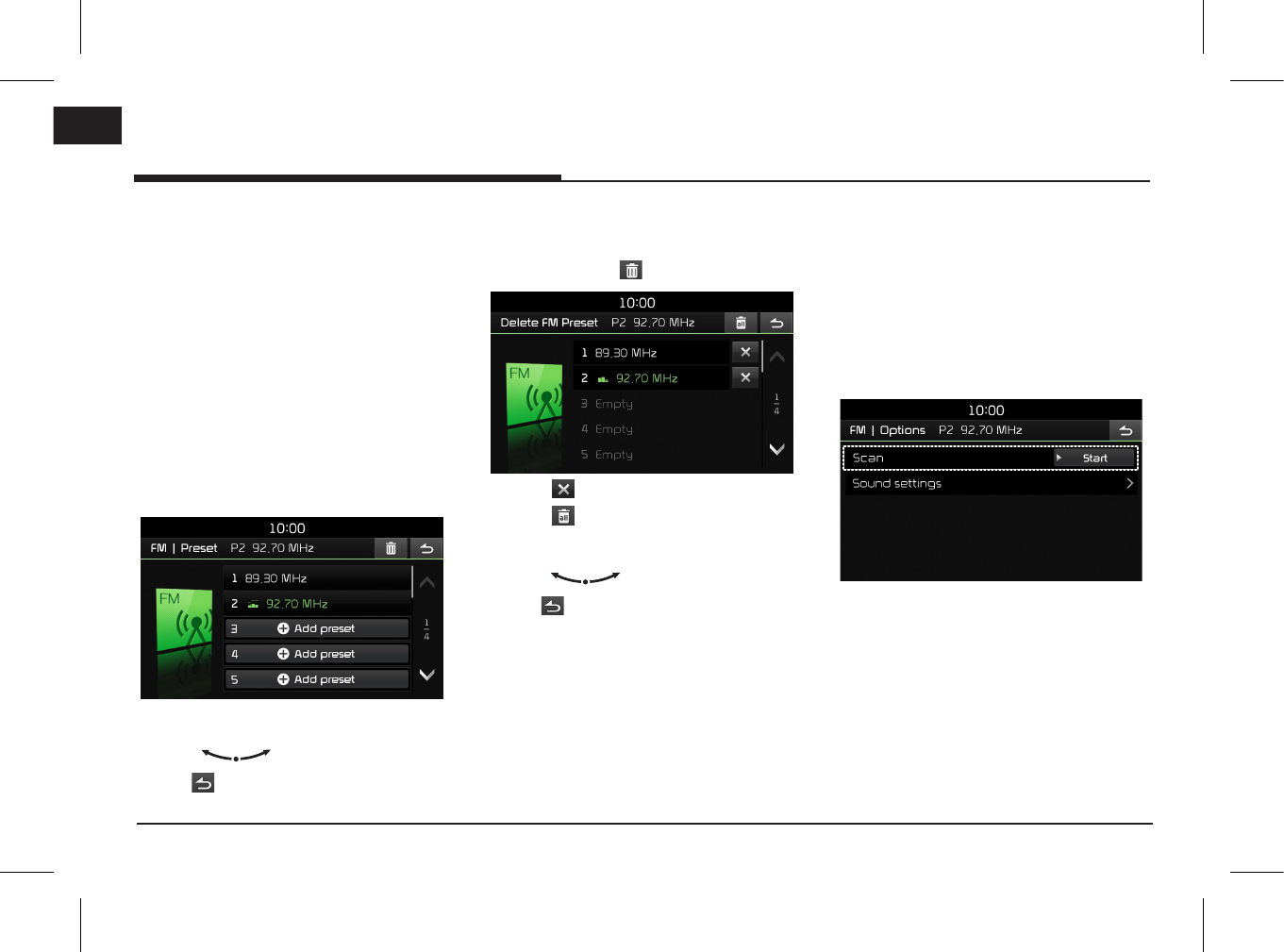
14
ENG
Radio operation (FM/AM)
Presetting FM/AM
Saving FM/AM preset
20 preset stations each for FM/AM modes can
be saved manually.
1. Select the band (FM, AM) you want to store
a station into.
2. Select the desired station.
3. Press [Preset].
4. Press the desired preset number.
If you want to overwrite an existing preset,
press and hold the respective preset
number.
, Note
• Rotate “ ” to scroll up or down.
• Press [ ] to move to the previous screen.
Deleting FM/AM preset
1. Select the band (FM, AM) you want.
2. Press [Preset] > [ ].
3. Press [ ] > [Yes].
Press [ ] > [Yes] to delete all presets.
, Note
• Rotate “ ” to scroll up or down.
• Press [ ] to move to the previous screen.
Setting the FM/AM options
Scan
This function scans all stations and plays only
stations with sucient signal strength for 5
seconds each.
1. Select the band (FM, AM) you want.
2. Press [Options].
3. Press [d Start].
Press [Z Stop] to stop the scan function.
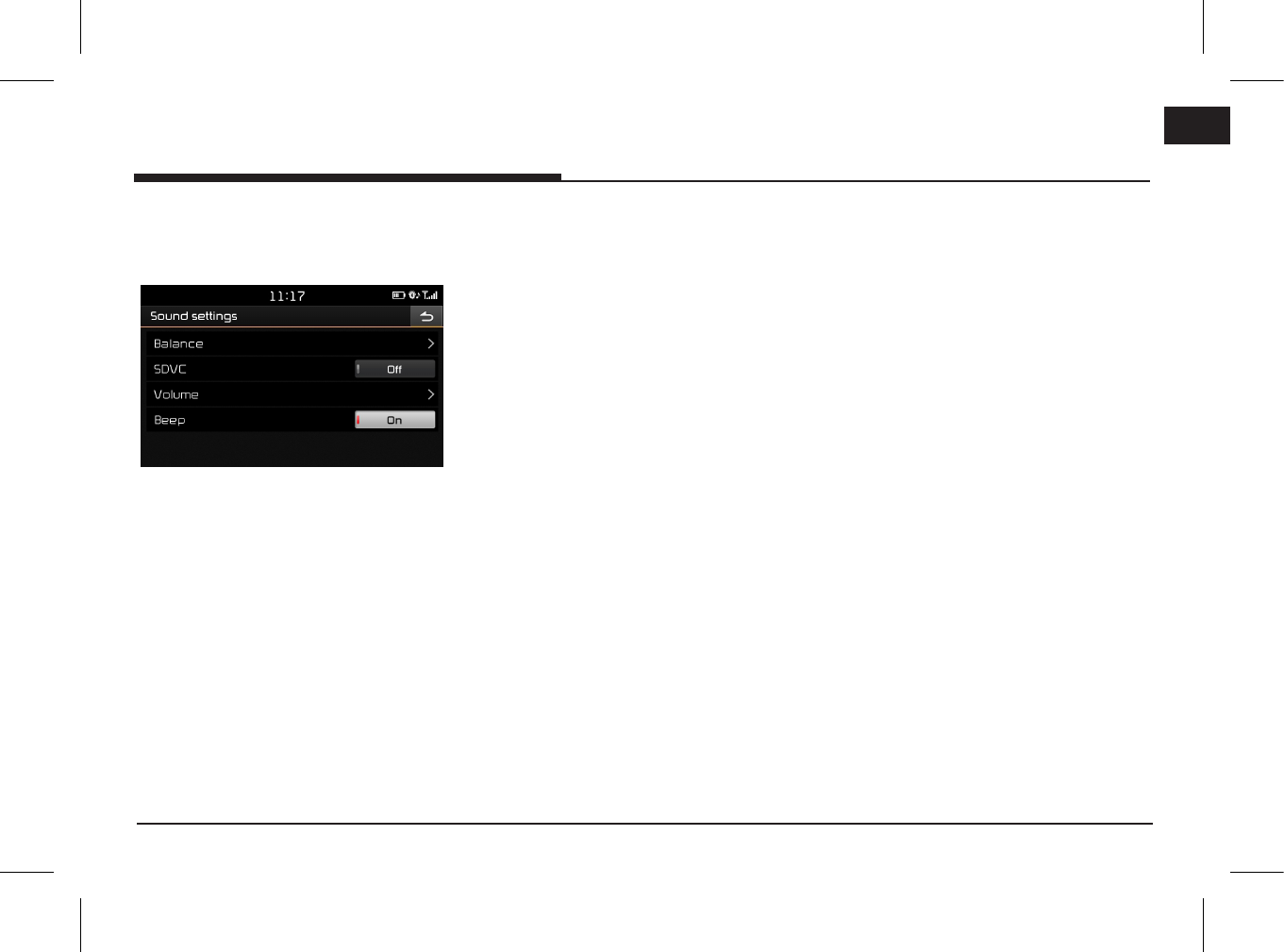
15
ENG
Radio operation (FM/AM)
Sound settings
1. Press [Options] > [Sound settings] in the
radio screen.
2. For details refer to page 33 (“Sound”).
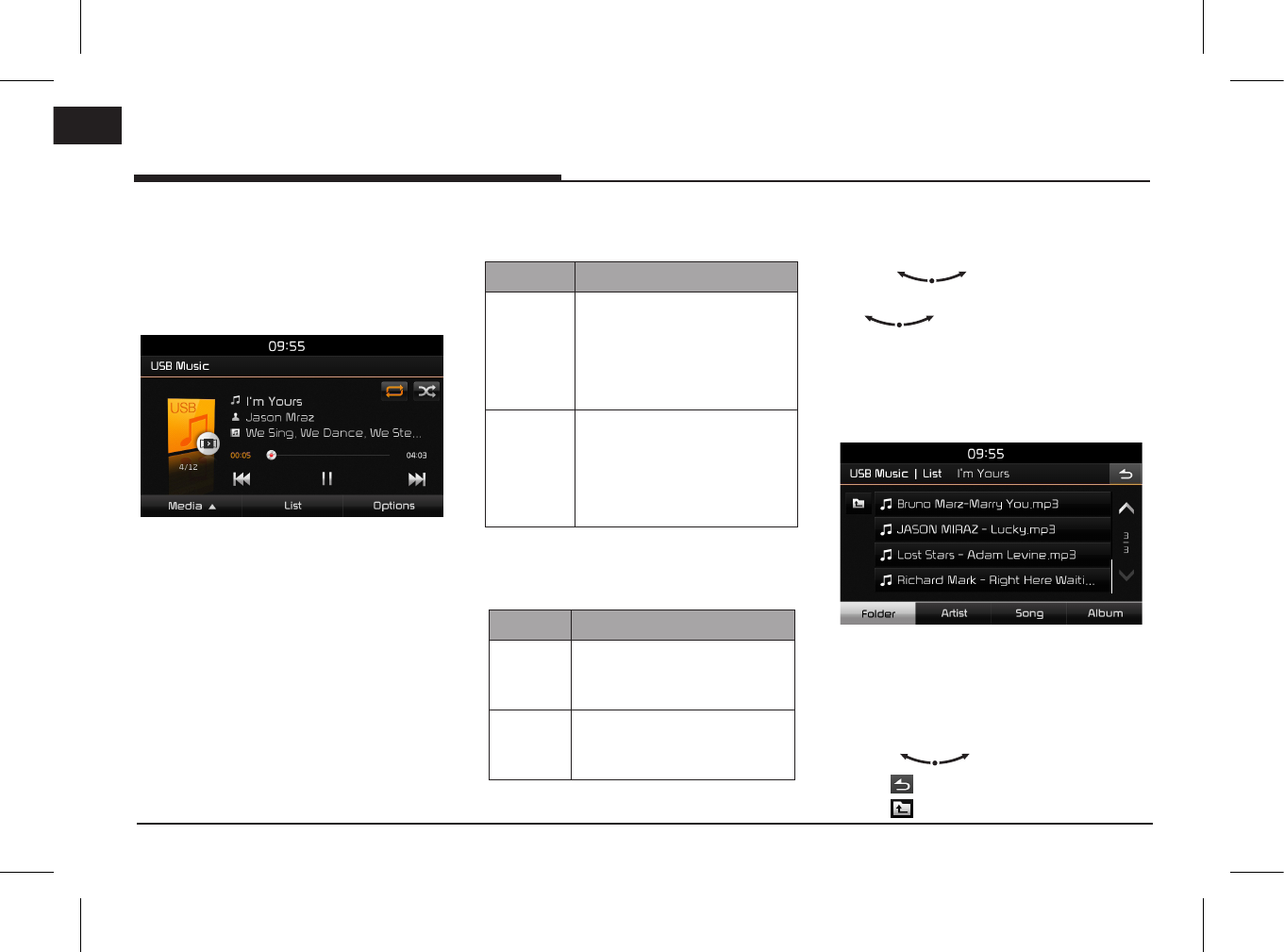
16
ENG
USB Operation
Playing USB music
You can play music les saved in a USB
memory device.
Connect a USB device to the USB port and
playback starts automatically.
, Note
To play USB music while a dierent source
is playing, press [MEDIA] > [Mediaw] > [USB
Music].
Pause
You can pause the playing le.
Press [M] during playback.
Press [d] to play it again.
Skip
You can play the previous or next le.
Position Description
Screen • Press [
C
/
V
].
• Pressing [
C
] after 3
seconds of playback time
plays the current le from
the beginning.
Head unit • Press "S/W".
• Pressing [S] after 3 seconds
of playback time plays
the current le from the
beginning.
Search
You can rewind/fastforward to a specic point
of a le.
Position Description
Screen Press and hold [C/V]
and then release at the point
you want.
Head unit Press and hold "S/W" and
then release at the point you
want.
Seek
You can play the le directly by searching for
the desired le.
1. Turn “ " to search for a desired le.
2. If the desired file is displayed, press the
“ " to play the file.
List
You can play the desired le by searching in
the les list in the USB Menu.
1. Press [List].
2.
Press the desired file name after searching in
the files list. The list can be sorted by [Folder],
[Artist], [Song] or [Album] by pressing the
respective softkey on the lower bar.
, Note
• Rotate “ ” to scroll up or down.
• Press [ ] to move to the previous screen.
• Press [ ] to move to upper folder.
USB Operation
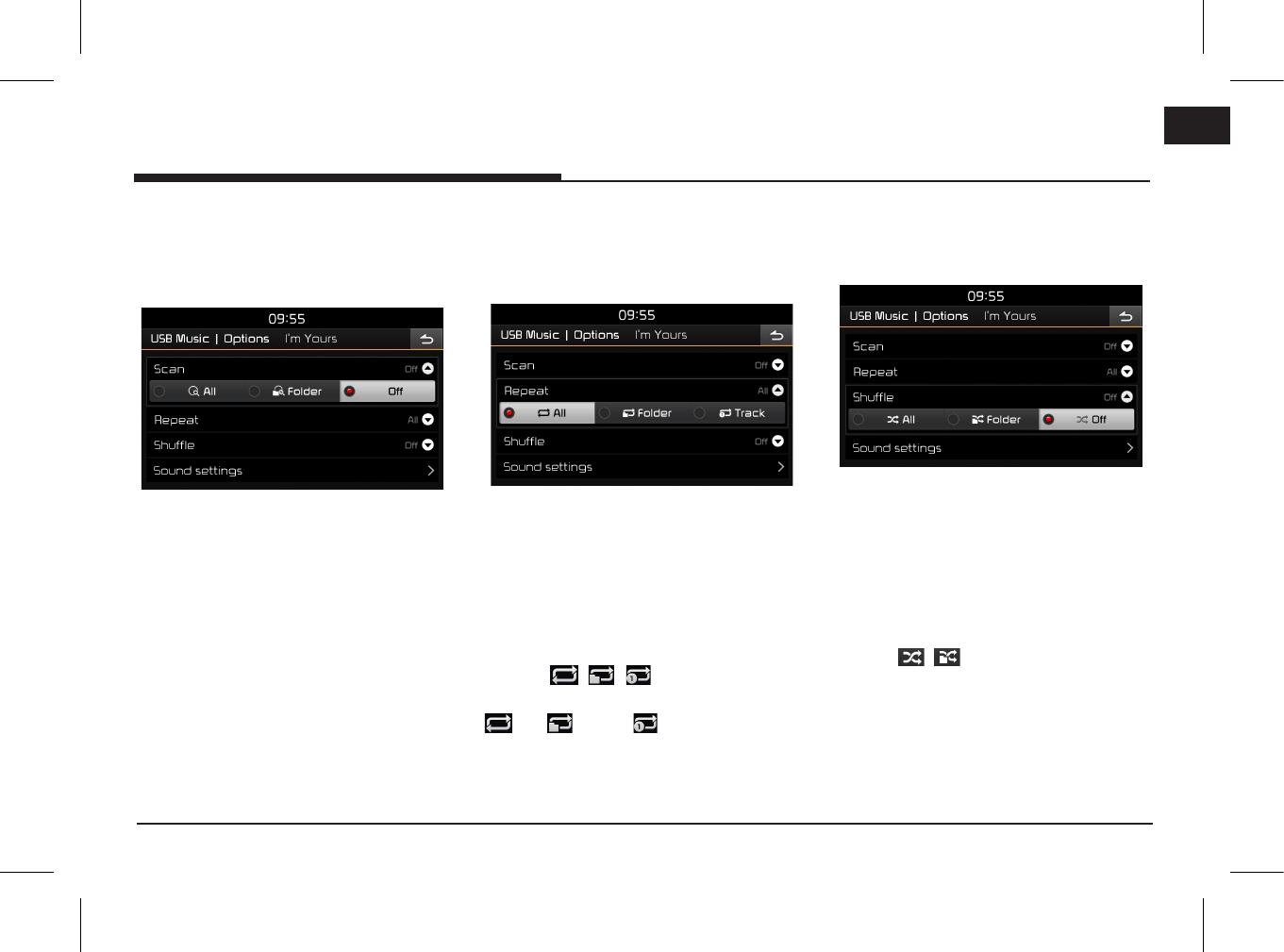
17
ENG
USB Operation
Scan
This function plays the rst 10 seconds of the
songs to provide a preview.
1. Press [Options] > [Scan].
2. Press the desired item.
•[All]:Playsthefirst10secondsofeach
song.
•[Folder]:Playsthefirst10secondsofeach
song within the current folder.
• [Off ]:Cancelsthescanfunction.
Repeat
This function provides the possibility to play a
set of les repeatedly.
1. Press [
Options
] > [Repeat].
2. Press the desired item.
•[All]:Repeatsthewholefileslist.
•[Folder]:Repeatsthefilesofthecurrent
folder.
•[Track]:Repeatsthecurrentfile,only.
, Note
You can also set the Repeat functions by
pressing [
/ /
]on the playing
screen.
: All, : Folder, : Track
Shuffle
Playing files in random order.
1. Press [Options] > [Shuffle].
2. Press the desired item.
• [All]:Playsallfilesrandomly.
• [Folder]:Playsallfileswithincurrent
folder randomly.
• [Off ]: Cancels the shuffle function.
, Note
You can set or cancel the Shue function by
pressing [
/
] on the playing screen.
Sound settings
1. Press [
Options
] > [Sound settings].
2. For details refer to page 33 (“Sound”).
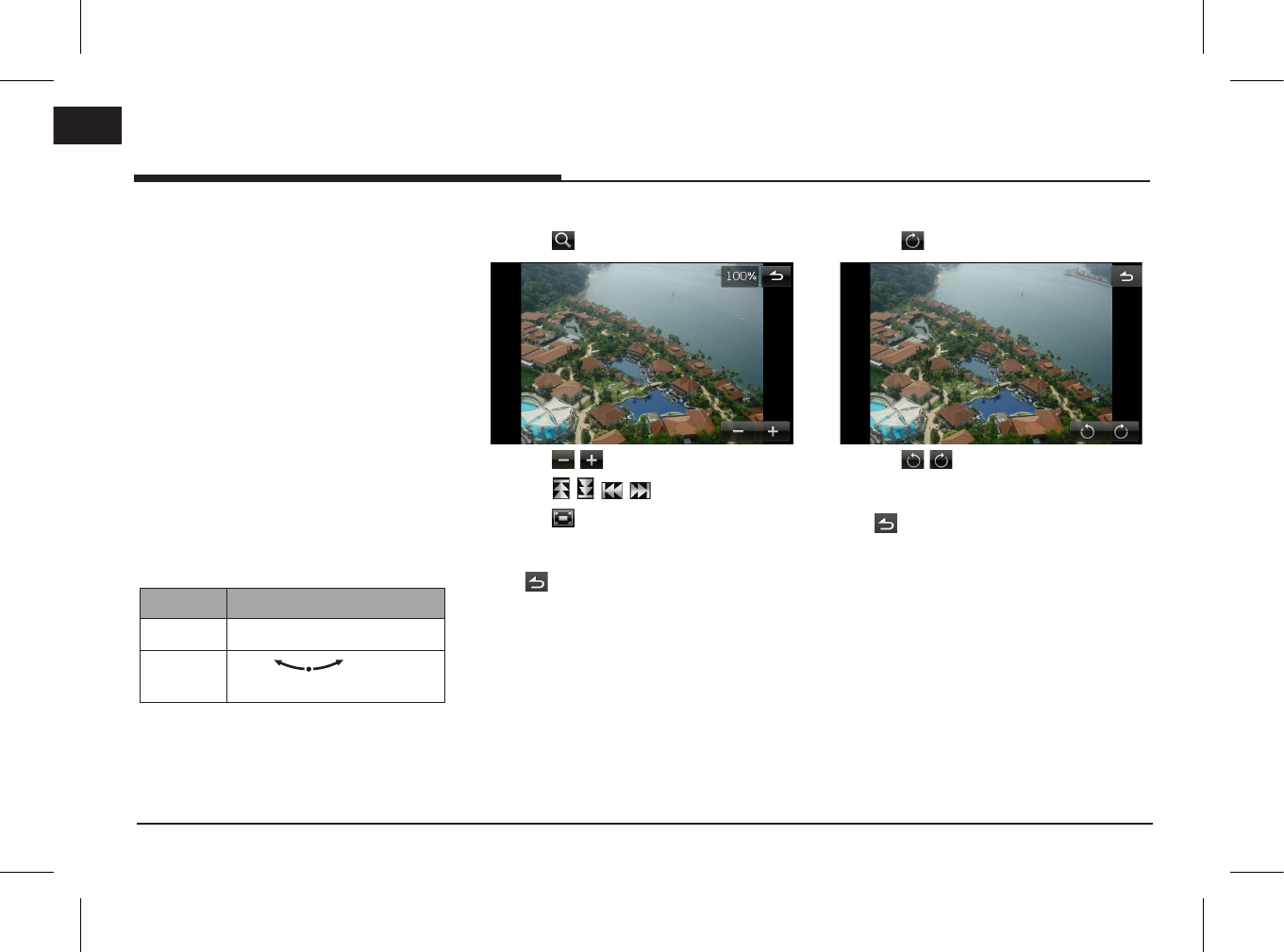
18
ENG
USB Operation
Viewing USB image
You can play image les saved in a USB
memory device.
Connect a USB device to the USB port and
playback starts automatically.
, Note
To display a USB image while a different source
is playing, press [MEDIA] > [Mediaw] > [USB
Image].
Switching to menu screen or full
screen
Press the screen repeatedly.
Skip
You can view the previous or next image.
Position Description
Screen Press [
C
/
V
].
Head unit Turn " " to the left or
right.
Zoom in/out
1. Press [ ] in menu screen.
2. Press [ / ].
3. Press [ / / / ] to move the image.
4. Press [ ] to return to the original image.
, Note
Press [ ] to move to the previous screen.
Rotating image
1. Press [ ] in menu screen.
2. Press [ / ] to rotate the image.
, Note
Press [ ] to move to the previous screen.
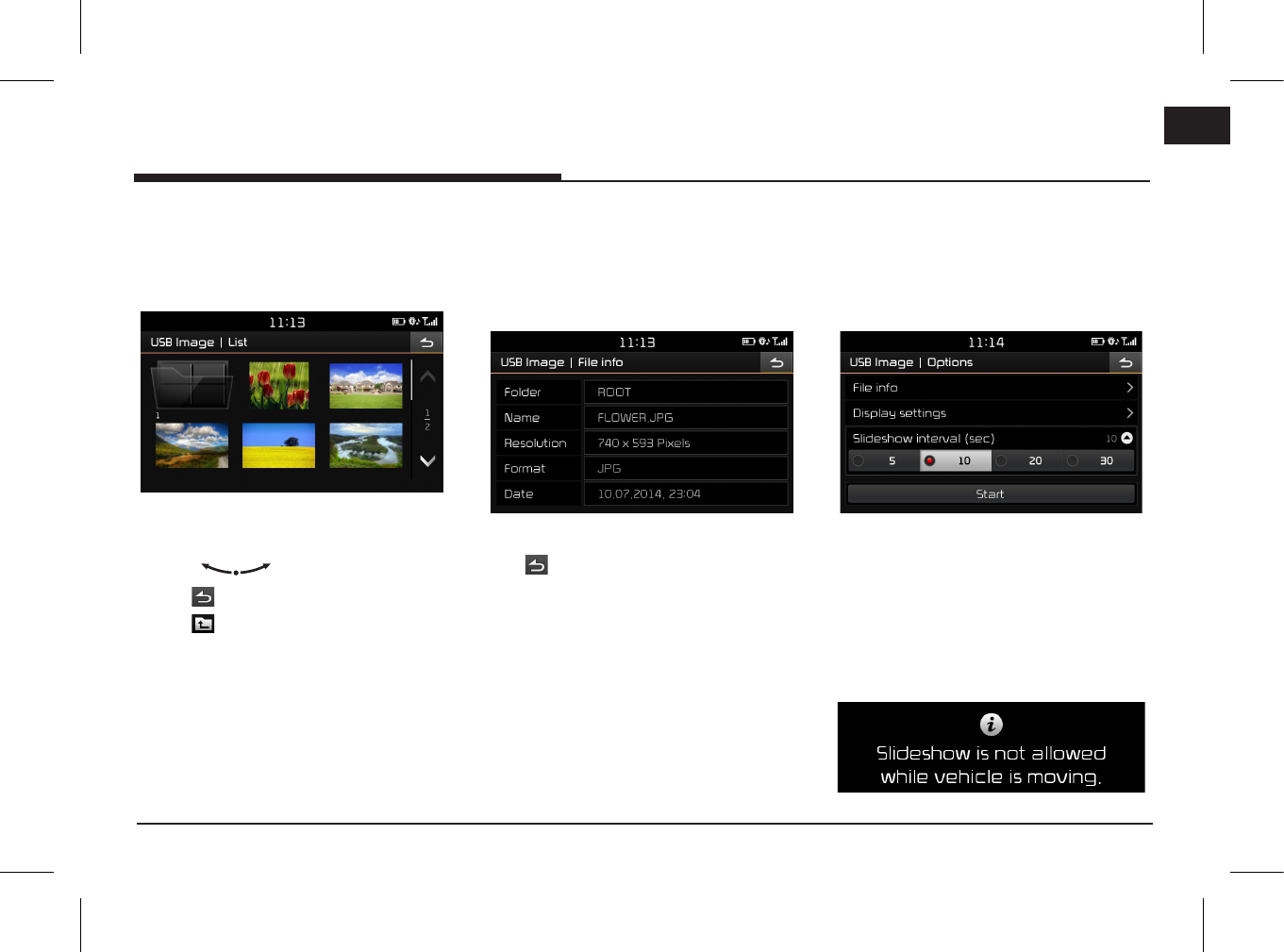
19
ENG
USB Operation
List
You can search for a desired image using the
images list.
1. Press [List].
2. Press the desired image.
, Note
• Rotate “ ” to scroll up or down.
• Press [ ] to move to the previous screen.
• Press [ ] to move to upper folder.
File info
This menu shows the folder name, le name,
resolution, format and date of the current
image.
1. Press [Options] > [File info].
, Note
Press [ ] to move to the previous screen.
Display settings
1. Press [Options] > [Display settings].
2. For details refer to page 34 ("Display").
Slideshow interval(sec)
You can set the slideshow interval. The
slideshow is played according to the time
interval.
1. Press [Options] > [Slideshow interval(sec)].
2. Select the slideshow interval.
3. Press [Start].
, Note
• Press the screen once to stop the slideshow.
• Slideshow is not available while driving.
(Because of trac regulations, image is only
available when your vehicle is parked.)
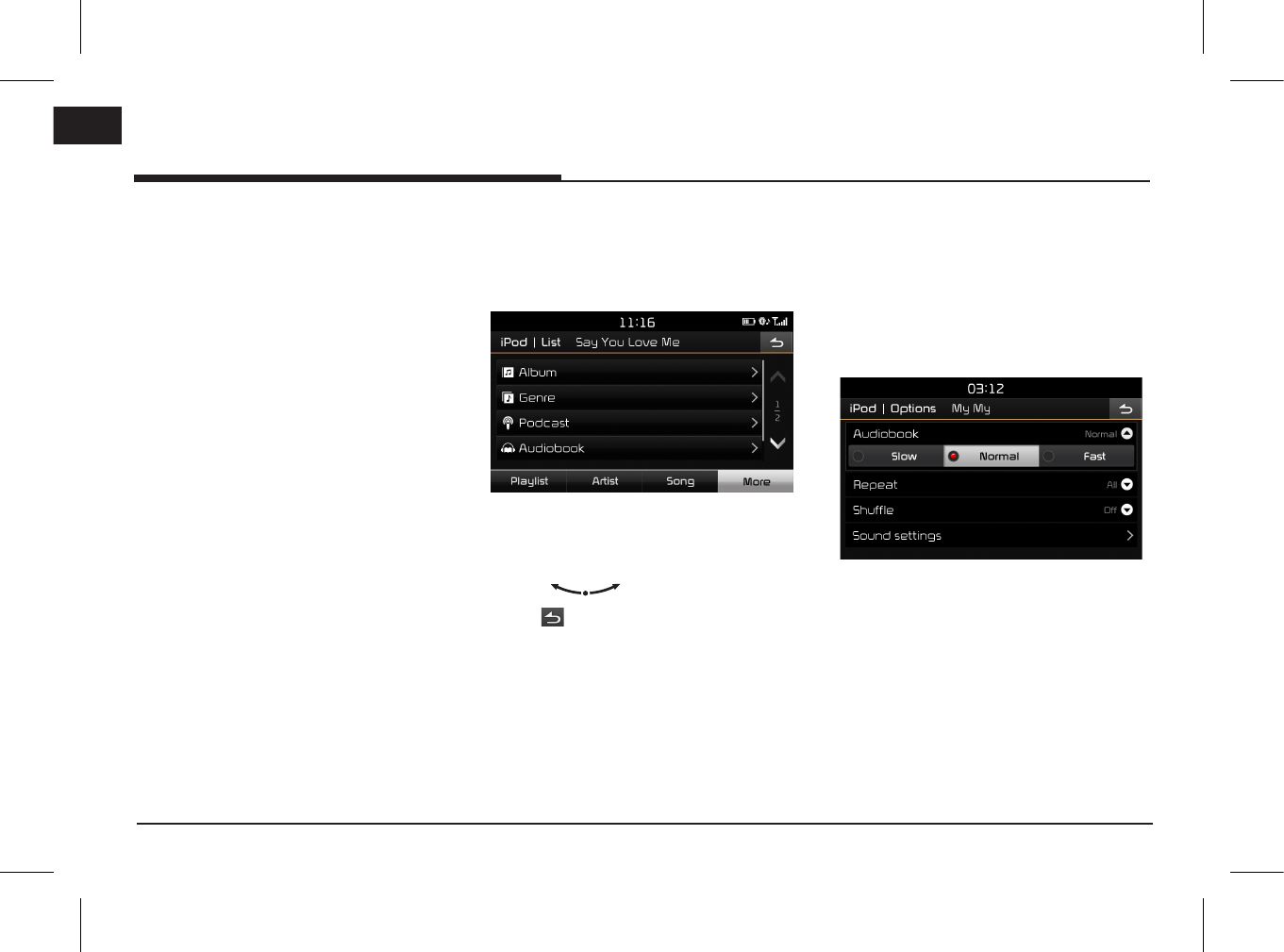
20
ENG
iPod Operation
Playing iPod
Connect an iPod to the USB port by using the
iPod cable and playback starts automatically.
, Note
To play iPod while a dierent source is playing,
press [MEDIA] > [Mediaw] > [iPod].
Pause
You can pause the playing le. For details refer
to page 16 (“Pause”).
Skip
You can play the previous or next le. For
details refer to page 16 (“Skip”).
Search
You can rewind/fastforward to a specific point
of a file. For details refer to page 16 (“Search”).
Seek
You can play the le directly by searching for
the desired le. For details refer to page 16
(“Seek”).
List
You can play the desired file by searching in
the files list in the iPod Menu.
1. Press [List].
2. Press the desired le after searching for
[Playlist], [Artist], [Song] or [More].
, Note
• Rotate “ ” to scroll up or down.
• Press [ ] to move to the previous screen.
Setting audiobook playback speed
Setting the playback speed only aects audio
books purchased from the iTunes store or
audible.com.
For details about iPod, refer to the iPod User
Guide.
1. Press [Options] > [Audiobook].
2. Select the desired items.
• [Slow]: Plays the audiobook with slow
speed.
• [Normal]: Plays the audiobook with
original speed.
• [Fast]: Plays the audiobook with fast
speed.
iPod Operation
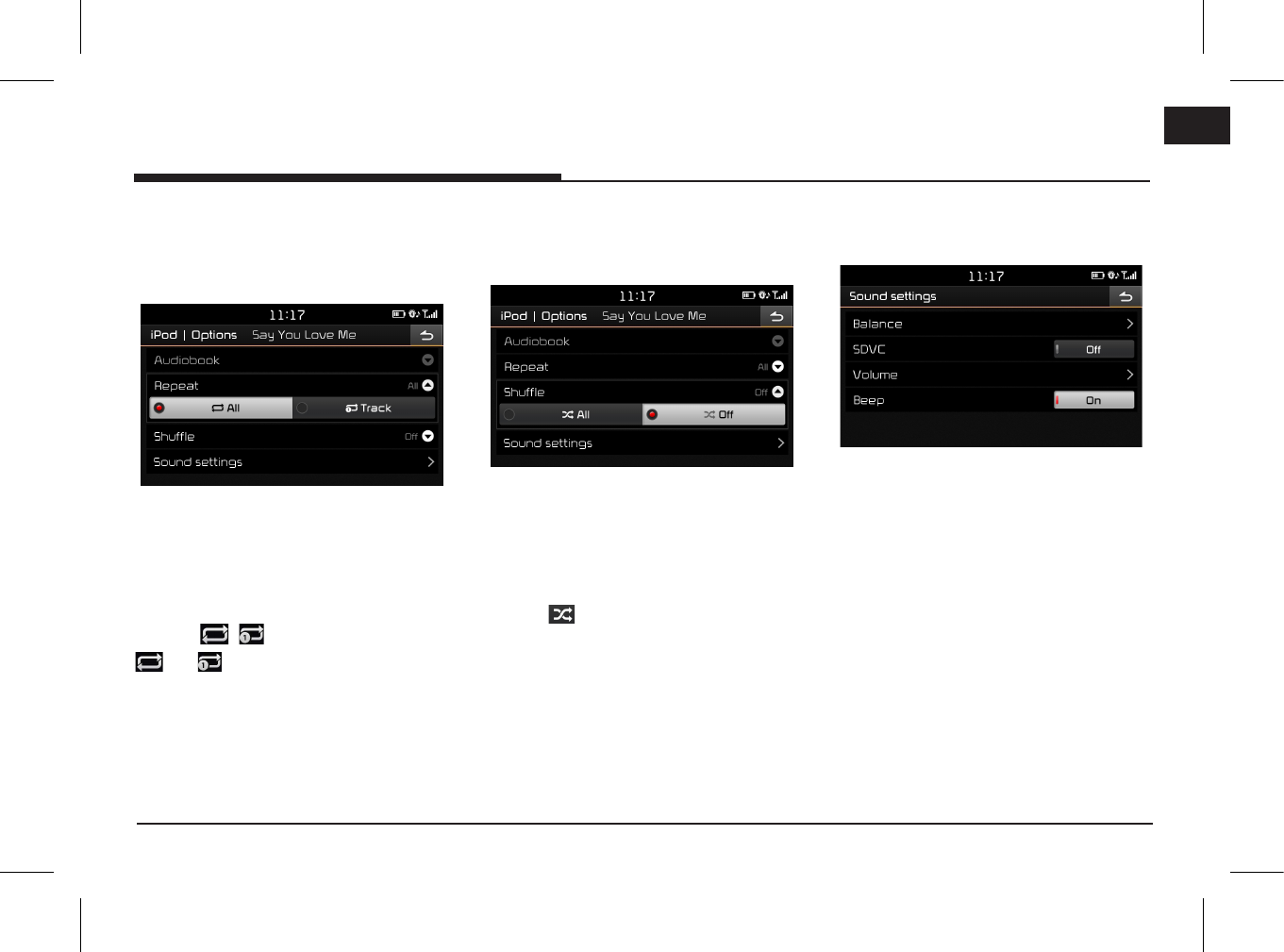
21
ENG
Repeat
This function provides the possibility to play a
set of files repeatedly.
1. Press [Options] > [Repeat].
2. Press the desired item.
•[All]:Repeatsthewholefileslist.
•[Track]:Repeatsthecurrentfile,only.
, Note
You can also set the Repeat functions by
pressing
[ / ]
on the playing screen.
: All, : Track.
Shuffle
Playing files in random order:
1. Press [Options] > [Shuffle].
2. Press the desired item.
• [All]:Playsallfilesrandomly.
• [Off ]: Cancels the shuffle function.
, Note
You can set or cancel the Shue function by
pressing [ ] on the playing screen.
Sound settings
1. Press [Options] > [Sound settings].
2. For details refer to page 33 (“Sound”).
iPod Operation
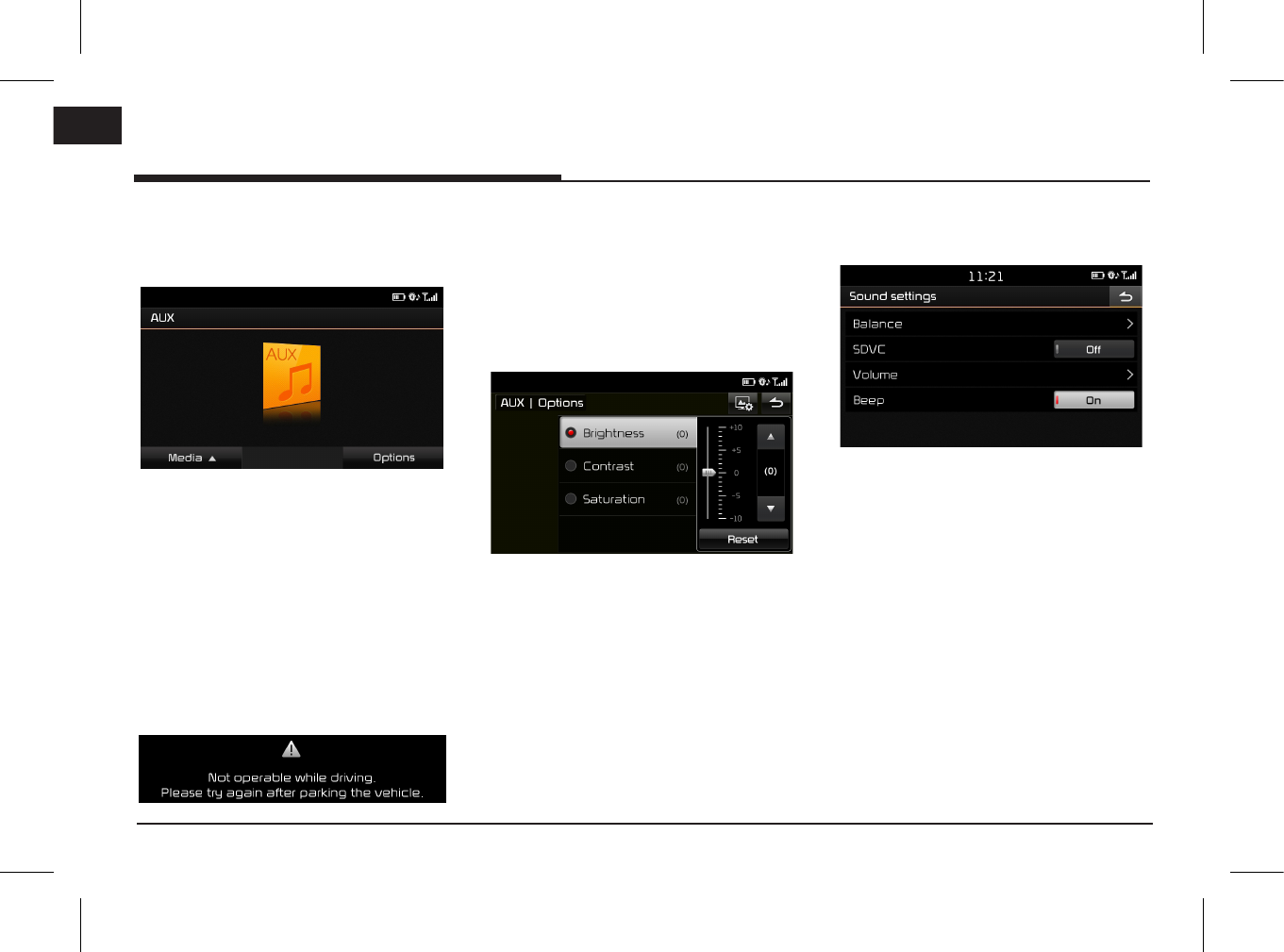
22
ENG
Auxiliary device operation
Playing an AUX source
1. Connect an auxiliary device to the AUX
terminal.
2. Play the auxiliary device.
, Note
• Some auxiliary devices that do not have the
video source may not produce output to the
video screen.
• To play auxiliary device while a dierent
source is playing, press [MEDIA] > [Mediaw]
> [AUX].
• Video is not available while driving.
(Because of trac regulations, Aux Video is
only available when your vehicle is parked.)
Switching to menu screen or full
screen during video playback
Press the screen repeatedly during video
playback.
Display settings
1. Press [Options] during video playback.
2. Press the desired item.
3. Adjust [Brightness], [Contrast] or
[Saturation] by pressing [w/s].
Press [Reset] to initialise the settings.
Sound settings
1. Press [Options] during audio playback.
2. For details refer to page 33 (“Sound”).
Auxiliary device operation
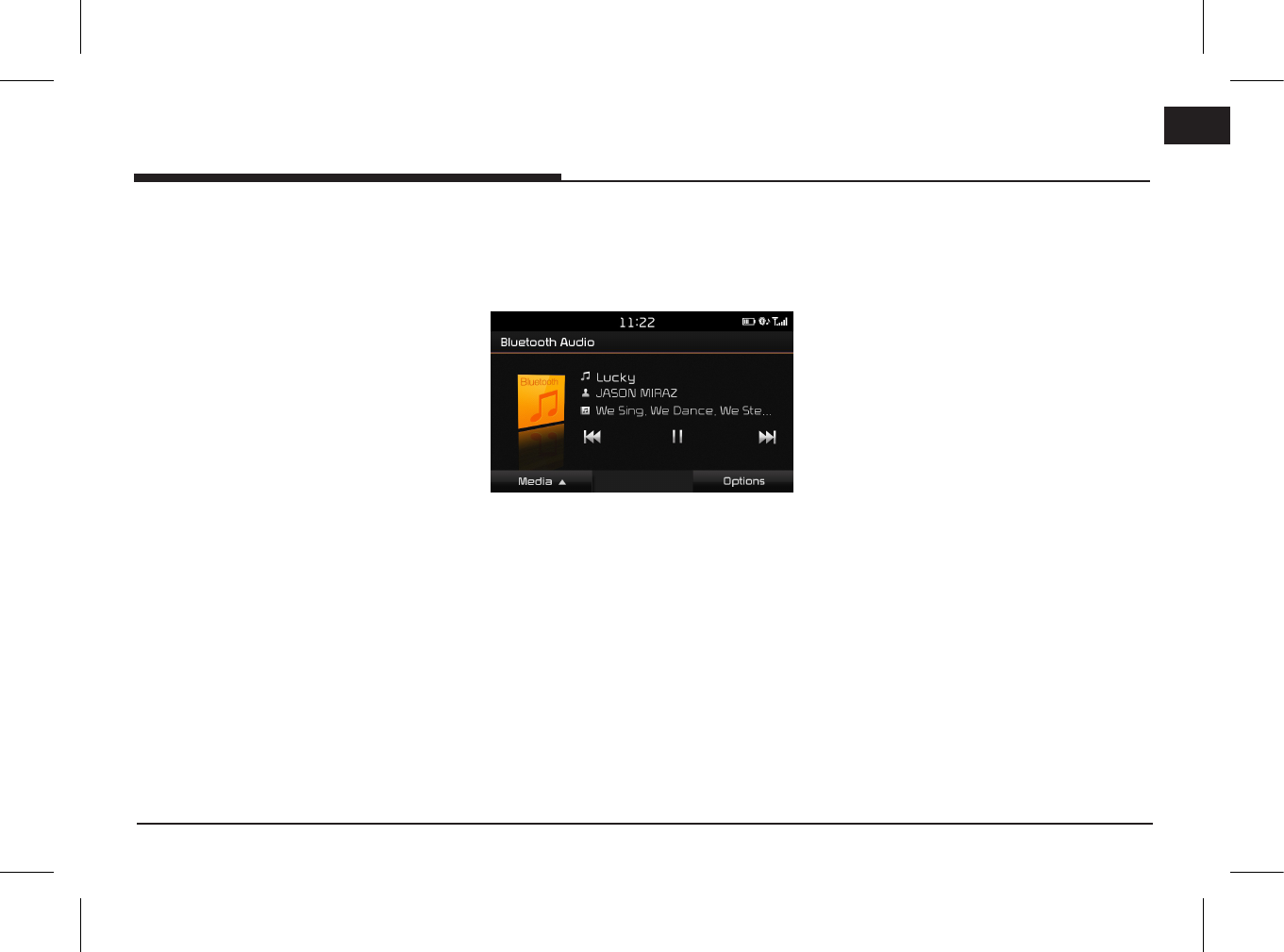
23
ENG
Bluetooth audio
Playing Bluetooth audio
Before playing the Bluetooth audio
• Music saved in the mobile phone can be
played in the car through Bluetooth audio
streaming.
• Bluetooth audio can be played only when a
Bluetooth phone or Bluetooth audio device
has been connected. To play Bluetooth
audio, connect the Bluetooth phone to
the car system. For more information on
connecting Bluetooth, please refer to the
user’s manual [Pairing and connecting the
unit and a Bluetooth phone] on page 48.
• If Bluetooth is disconnected while playing
Bluetooth audio, the audio stream will be
interrupted.
• The audio streaming function may not be
supported in some mobile phones. Only one
function can be used at a time, either the
Bluetooth handsfree or the Bluetooth audio
function. For example, if you convert to the
Bluetooth handsfree while playing Bluetooth
audio, the music stream is interrupted.
• Playing music from the car is not possible
when there are no music les saved in the
mobile phone.
Starting the Bluetooth audio
1. Press [MEDIA] > [Mediaw] > [Bluetooth
Audio].
2. The Bluetooth audio screen is displayed.
, Note
To play bluetooth audio while a dierent
source is playing, press [MEDIA] > [Mediaw] >
[Bluetooth Audio].
Pause
Press [M] during playback.
Press [d] to play it again.
, Note
This feature may not be supported in some
Bluetooth devices.
Skip
You can play the previous or next le.
For details refer to page 16 (“Skip”).
, Note
This feature may not be supported in some
Bluetooth devices.
Sound settings
1. Press [Options] > [Sound settings].
2. For details refer to page 33 (“Sound”).
Bluetooth audio

24
ENG
Getting started with navigation
Precautions for safe driving
Please observe and comply with local trac
rules and regulations.
• For your safety, some features cannot be
operated while driving. Features that cannot
be operated will be disabled.
• The route displayed for destination guidance
is a reference and the route guidance will
take you to the vicinity of your destination.
The highlighted route is not always the
shortest distance, the least congested, and
in some cases might, not be the fastest
route.
• Road, name, and POI information may
not always been completely updated. It
might happen that road names and POI
information is not up to date.
• The car position mark does not always
indicate your exact location. This system uses
GNSS information, various sensors, and road
map data to display the current position.
However, errors in displaying your location
may occur if the satellite is transmitting
inaccurate signals or two or less satellite
signals can be received. Errors that occur in
such conditions cannot be corrected.
• The position of the vehicle within the
navigation may dier from your actual
location depending on various reasons,
including the satellite transmission
state, vehicle state (driving location and
conditions), etc. Additionally, the car
position mark may dier from the actual
position if the map data is dierent from
the actual road landscape, such as changes
due to the construction of new roads. If
such dierences occur, driving for a short
period of time will automatically correct
the position of the vehicle through map
matching or GNSS information.
What is GNSS?
The GNSS(Global Navigation Satellite System)
is a satellite-based navigation system made up
of a network of 32 satellites placed into orbit
by the Global Positioning System (GPS) of U.S.A,
GLONASS of RUSSIA, etc.
GNSS works in any weather conditions,
anywhere in the world, 24 hours a day.
There are no subscription fees or setup charges
to use GNSS.
About satellite signals
Your unit must acquire satellite signals to
operate. If you are indoors, near tall buildings
or trees or in a parking garage, the unit cannot
acquire satellite signals.
Acquiring satellite signals
Before the unit can determine your current
position and navigate a route, you must do the
following steps:
1. Go outside to an area free from tall
obstructions.
2. Turn on the unit.
Acquiring satellite signals can take a few
minutes.
Initial navigation screen
When you enter a navigation mode for the rst
time, the caution screen is displayed on the
screen. Read the caution carefully and then
press [Agree].
• If you want to change the system language,
press [Language]. For details refer to page 35
(“Language”).
• If there is no operation for 10 seconds in the
caution screen the system automatically
switches to the navigation screen.
Getting started with navigation

25
ENG
Bluetooth® Wireless Technology
Before Using the Bluetooth
Handsfree
What is Bluetooth Wireless
Technology?
• Bluetooth Wireless Technology refers to a short-
distance wireless networking technology
which uses a 2.45GHz frequency to connect
various devices within a certain distance.
• Supported within PCs, external devices,
Bluetooth phones, PDAs, various electronic
devices, and automotive environments,
Bluetooth Wireless Technology to be
transmitted at high speeds without having to
use a connector cable.
• Bluetooth Handsfree refers to a device which
allows the user to conveniently make phone
calls with Bluetooth mobile phones through
the system.
• The Bluetooth Handsfree feature may not be
supported in some mobile phones.
Precautions for Safe Driving
• Bluetooth Handsfree is a feature that enables
drivers to practice safe driving. Connecting
the head unit with a Bluetooth phone
allows the user to conveniently make calls,
receive calls, and manage the phone book.
Before using Bluetooth Wireless Technology,
carefully read the contents of this user’s
manual.
• Excessive use or operations while driving
may lead to negligent driving practices and
be the cause of accidents. Do not operate
the device excessively while driving.
• Viewing the screen for prolonged periods
of time is dangerous and may lead to
accidents. When driving, view the screen
only for short periods of time.
Cautions upon Connecting Bluetooth
Phone
• Before connecting the head unit with the
mobile phone, check to see that the mobile
phone supports Bluetooth features.
• If you do not want automatic connection
with your Bluetooth device, turn the
Bluetooth feature o of the Bluetooth
device.
• Park the vehicle when pairing the head unit
with the mobile phone.
• Some Bluetooth features may occasionally
not operate properly depending on the
rmware version of your mobile phone.
If such features can be operated after
receiving a S/W upgrade from your mobile
phone manufacturer, unpair all devices and
pair again before use.
Bluetooth® Wireless Technology
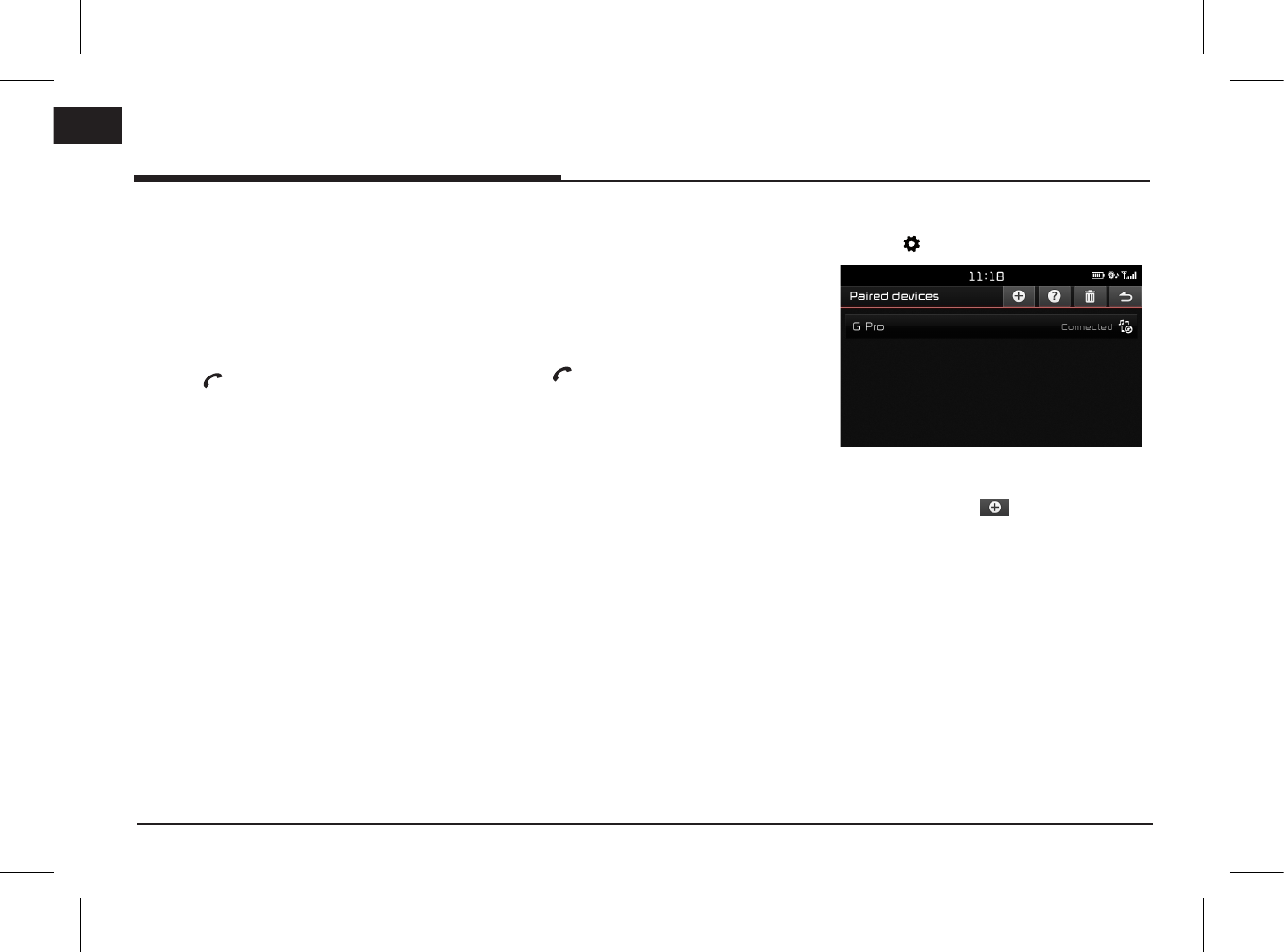
26
ENG
Bluetooth® Wireless Technology
Pairing and connecting the
unit and a Bluetooth phone
To use the Bluetooth feature, make sure the
Bluetooth on your phone is turned on. Refer to
your phone’s user guide.
When no phones have been paired
1. Press " " on the head unit or the steering
wheel remote control.
2. Press [Yes] to search for Bluetooth phones.
• [No]: Cancels Bluetooth connection.
• [Help]: Moves to the [Bluetooth help]
menu.
3. In your phone, initiate a search for
Bluetooth devices. (The default device
name is KIA MOTORS.)
4. 1) If the SSP (Secure Simple Pairing) is not
supported, enter the passkey on your
Bluetooth device. (The default passkey
is 0000.)
2) If the SSP (Secure Simple Pairing) is
supported, press [Yes] on the pop-up
screen of your Bluetooth device.
(The pop-up screen may dier from the
actual information of the Bluetooth
device.)
5. Bluetooth becomes connected.
The mobile phone contacts and the calling
list are downloaded.
When the connection fails, failure message
is displayed on the screen.
When a phone is already paired
1. Press " " on the head unit or the steering
wheel remote control.
2. Press the device from the Bluetooth device
list pop-up screen.
3. Press [Yes] to activate the selected device.
If you want to pair additional device, press
[Add new]. Follow the steps 3-5 of “When
no phones have been paired” .
When pairing additional device
1. Press [ ] > [Bluetooth] > [Paired devices].
2. 1) Select the device you want to connect.
2) If there is no device you want to
connect, press [ ].
3. In your phone, initiate a search for
Bluetooth devices. (The default device
name is KIA MOTORS.)
4. 1) If the SSP (Secure Simple Pairing) is not
supported, enter the passkey on your
Bluetooth device. (The default passkey
is 0000.)
2) If the SSP (Secure Simple Pairing) is
supported, press [Yes] on the pop-up
screen of your Bluetooth device.
(The pop-up screen may dier from
the actual information of the Bluetooth
device.)
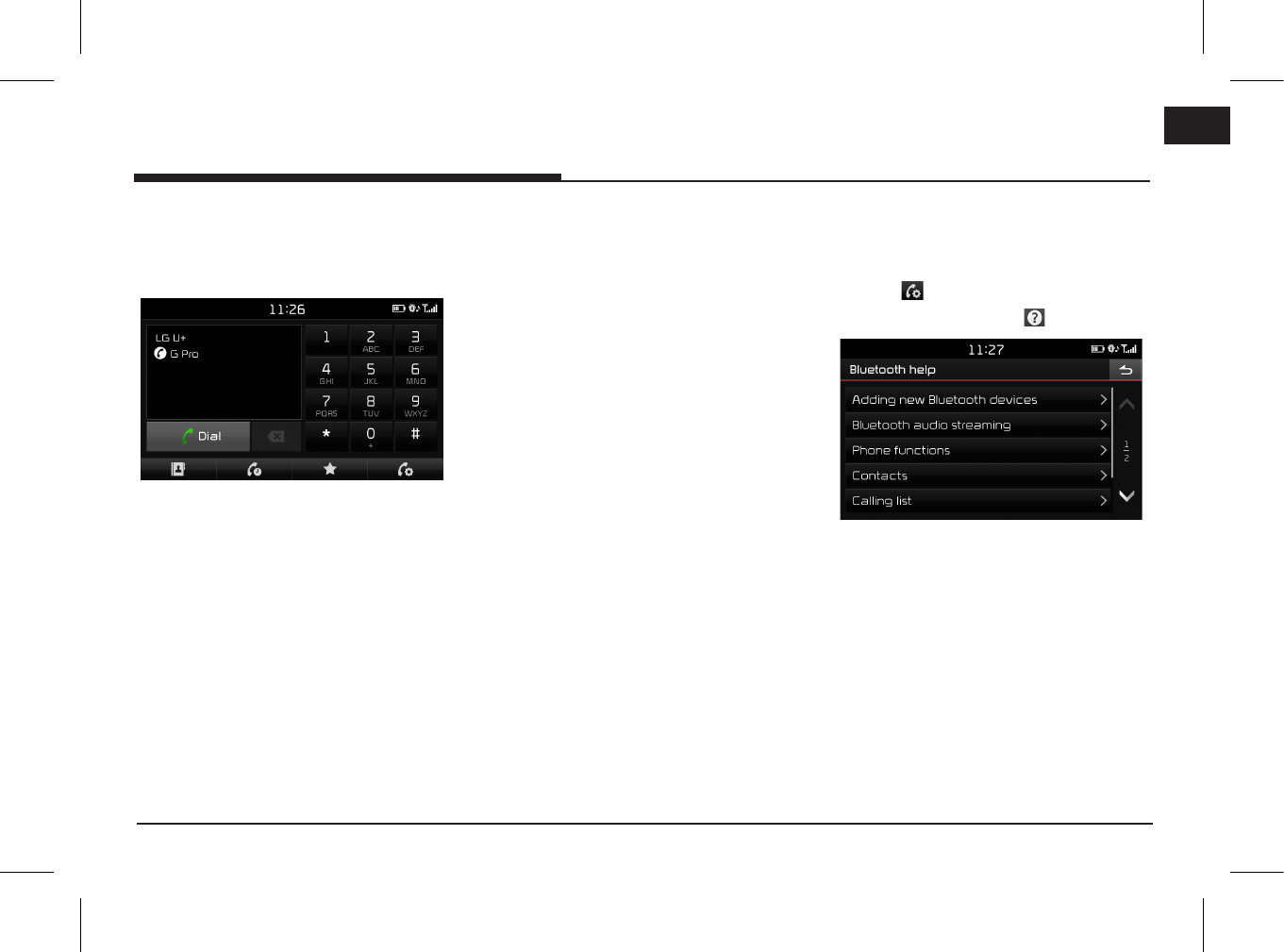
27
ENG
Bluetooth® Wireless Technology
5. When your phone is successfully
connected, the phone menu is displayed
on the screen. When the connection fails,
failure message is displayed on the screen.
<Phone screen>
Once Bluetooth connection is successful,
the name of the connected mobile phone
will be displayed on the phone screen
and Bluetooth handsfree functions will be
ready to be operated.
, Note
• For safety reasons, pairing a Bluetooth
phone is not possible when the vehicle is in
motion. Park the vehicle in a safe location to
pair a Bluetooth phone. It is possible to pair
up to 5 mobile phones. In order to pair a
new phone when there are already 5 mobile
phones paired, you must rst delete one of
the previously paired phones.
• Some functions may not be supported due
to limited Bluetooth compatibility between
the car system and mobile phone.
• When a Bluetooth device is connected, a
new device cannot be paired. If you want
to pair a new phone, rst disconnect the
connected Bluetooth device.
Bluetooth help
This menu provides help concerning the usage
of Bluetooth functions.
1. Press [ ] on the phone screen.
2. Press [Paired devices] > [ ].
3. Select the desired items.
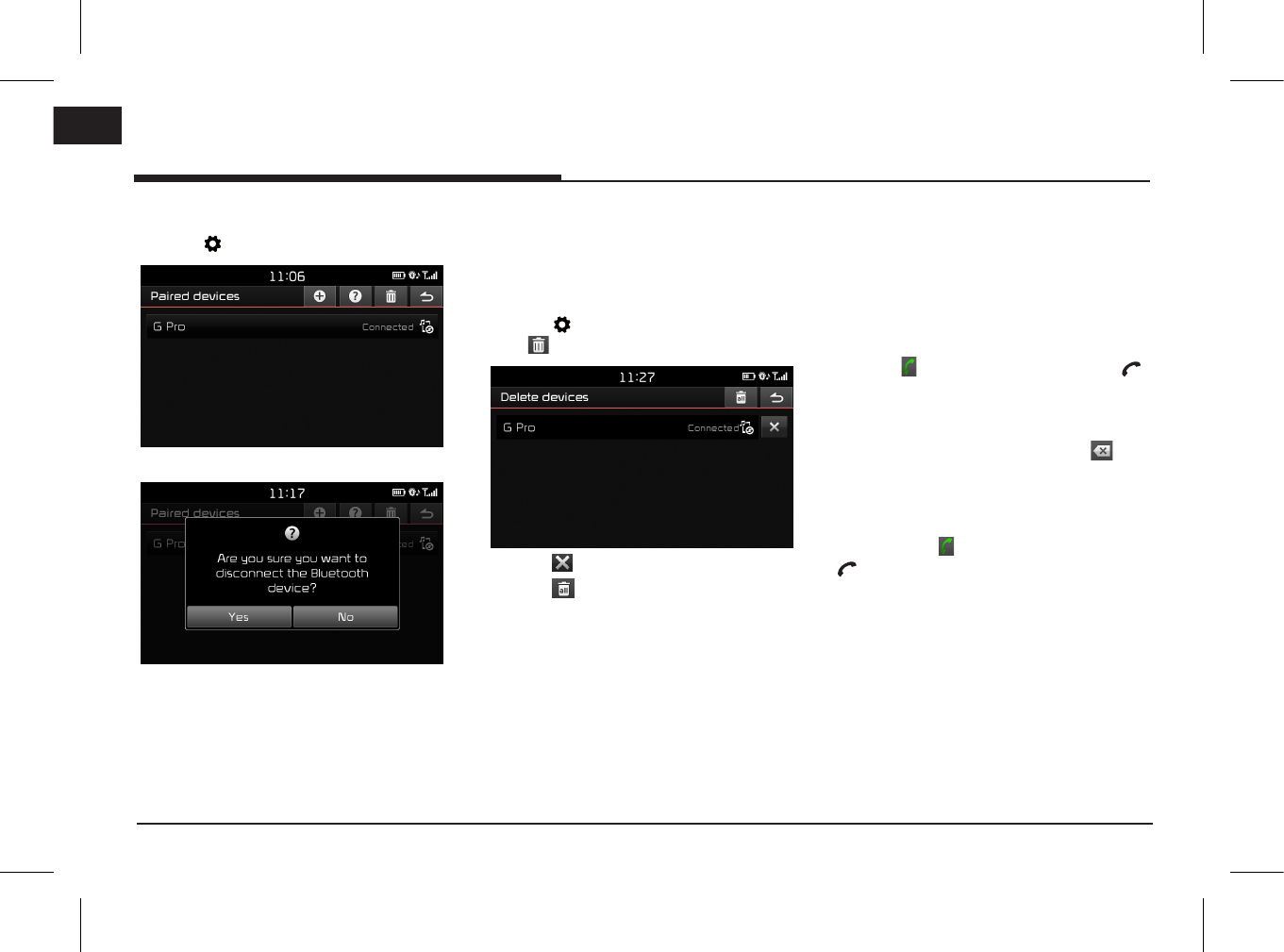
28
ENG
Bluetooth® Wireless Technology
Disconnecting the connected phone
1. Press [ ] > [Bluetooth] > [Paired devices].
2. Select the connected phone.
3. Press [Yes].
, Note
If you want to connect the disconnected
phone again, select the disconnected phone.
Deleting Bluetooth Devices
If you do not need to use a phone any
longer, you can delete it. Note that deleting a
Bluetooth device will delete all calling list and
contact entries.
1. Press [ ] > [Bluetooth] > [Paired devices]
> [ ].
2. Press [ ] > [Yes].
Press [ ] > [Yes] to delete all devices.
Making a call by entering
phone number
Connect your unit and Bluetooth phone before
making a call.
1. Enter the phone number using the keypad
on the phone screen.
2. Press [ Dial] on the phone screen or " "
on the steering wheel remote control.
, Note
If you press the wrong number, press [ ] to
delete one digit of the entered number.
Making a call by redialing
Press and hold [ Dial] on the phone screen or
“ ” on the steering wheel remote control.
, Note
Redialing is not possible when there is no
dialled calls list.
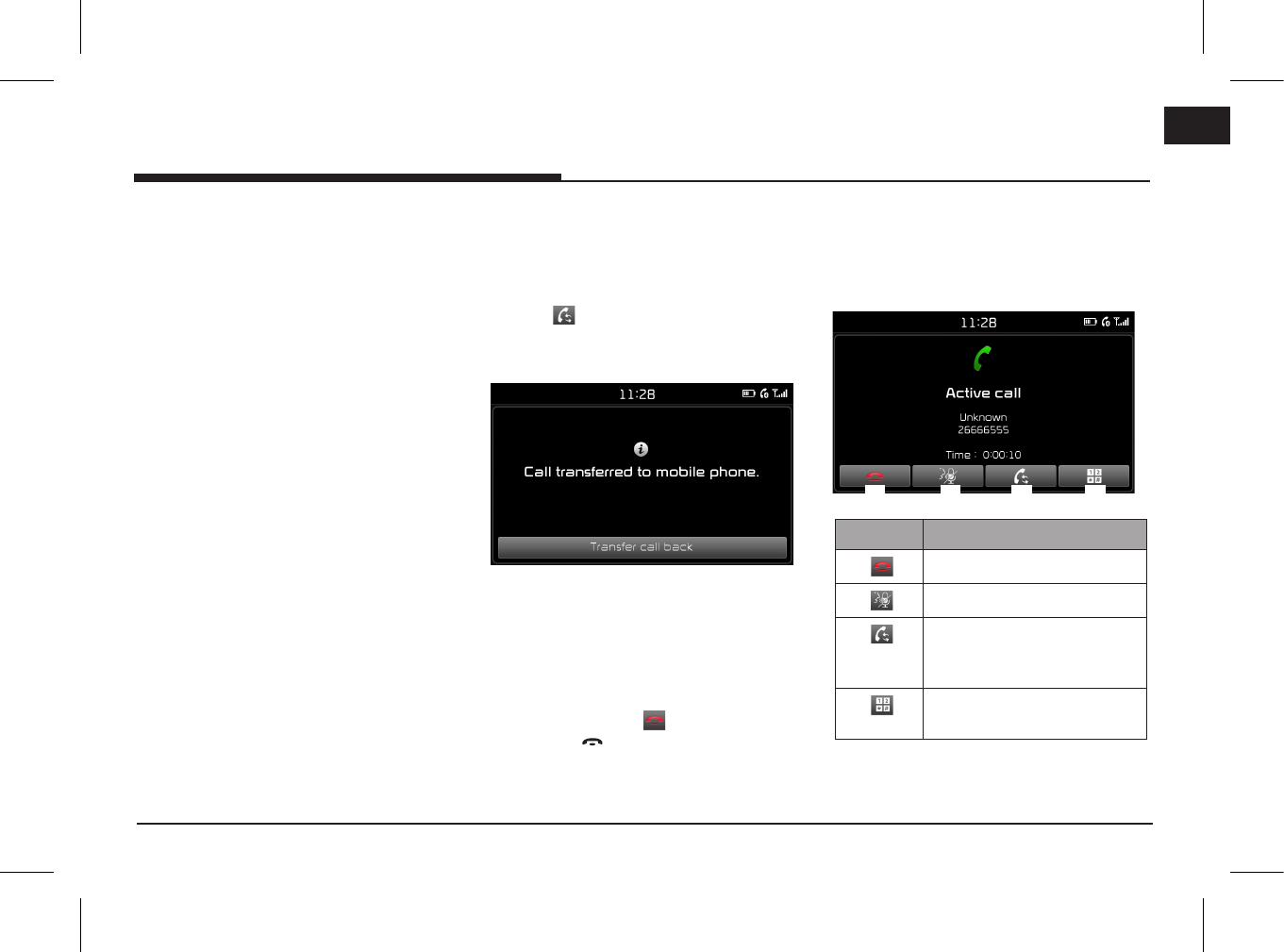
29
ENG
Bluetooth® Wireless Technology
Answering/Rejecting a call
1. If there is an incoming call, a popup
message will appear.
2. Press [Accept] to answer the call.
To reject a call, select [Reject].
, Note
• If the Call-ID service is available, the caller’s
phone number is displayed.
• If caller’s phone number is saved in the
phone book, the caller’s name is displayed
on the unit.
• Upon receiving a call, the [Reject] function
may not be supported in some mobile
phones.
Switching call to the mobile
phone
1. If you want to switch the call to the mobile
phone while talking on the car handsfree,
press [ ].
As shown below, the call is switched to the
mobile phone.
2. If you want to switch the call to the car
handsfree while talking on the mobile
phone, press [Transfer call back].
The call is switched to the car handsfree.
Ending a call
1. To end a call, press [ ] on the phone
screen or " " on the steering wheel
remote control.
2. The call is ended.
Using the menu during a phone
call
When making a call, you can use the following
menu items.
A DCB
Position Description
A
Ends a call.
B
Turns the Mic On/Off.
C
Switches a voice call from the
car handsfree to the mobile
phone.
D
Moves to a screen for entering
ARS numbers.
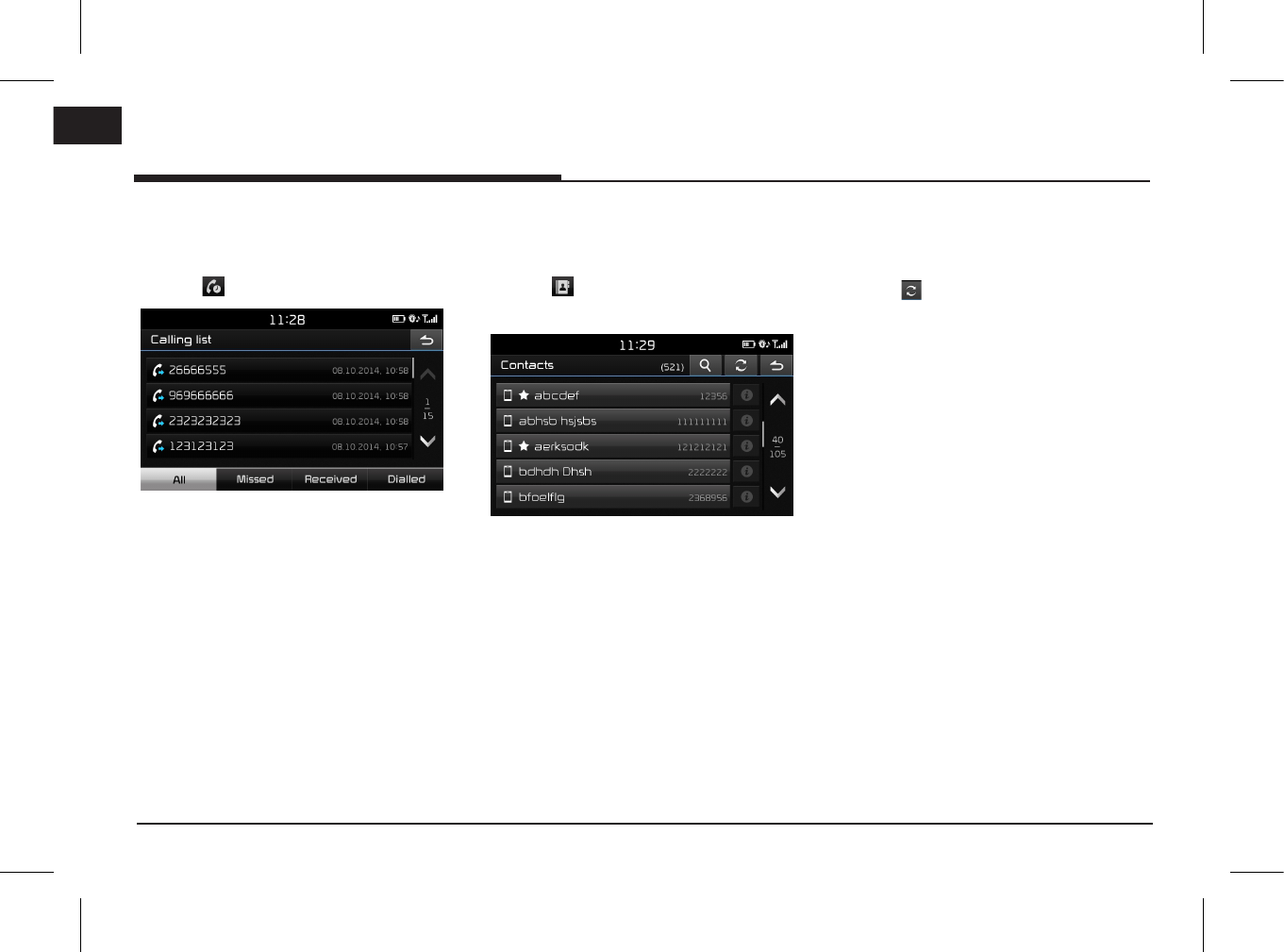
30
ENG
Bluetooth® Wireless Technology
Calling list
Making a call from calling list
1. Press [ ] on the phone screen.
2. Press [All], [Missed], [Received] or [Dialled].
• [All]: Displays all calling list.
• [Missed]: Displays the missed calling list.
• [Received]: Displays the incoming calling
list.
• [Dialled]: Displays the outgoing calling
list.
3. Press the entry you want to call.
, Note
The calling list may not be saved in some
mobile phones.
Contacts
Making a call from contacts
1. Press [ ] on the phone screen.
The contacts are displayed on the screen.
<Contacts screen>
2. Select the contact you want to call from
the list of contacts.
Updating mobile phone contacts
Up to 5,000 mobile phone contacts can be
updated.
1. Press [ ] on the contacts screen.
The contacts are deleted and the contacts
of the connected phone is duplicated.
, Note
• Upon updating mobile phone contacts, the
previous data is deleted.
• This feature may not be supported in some
mobile phones.
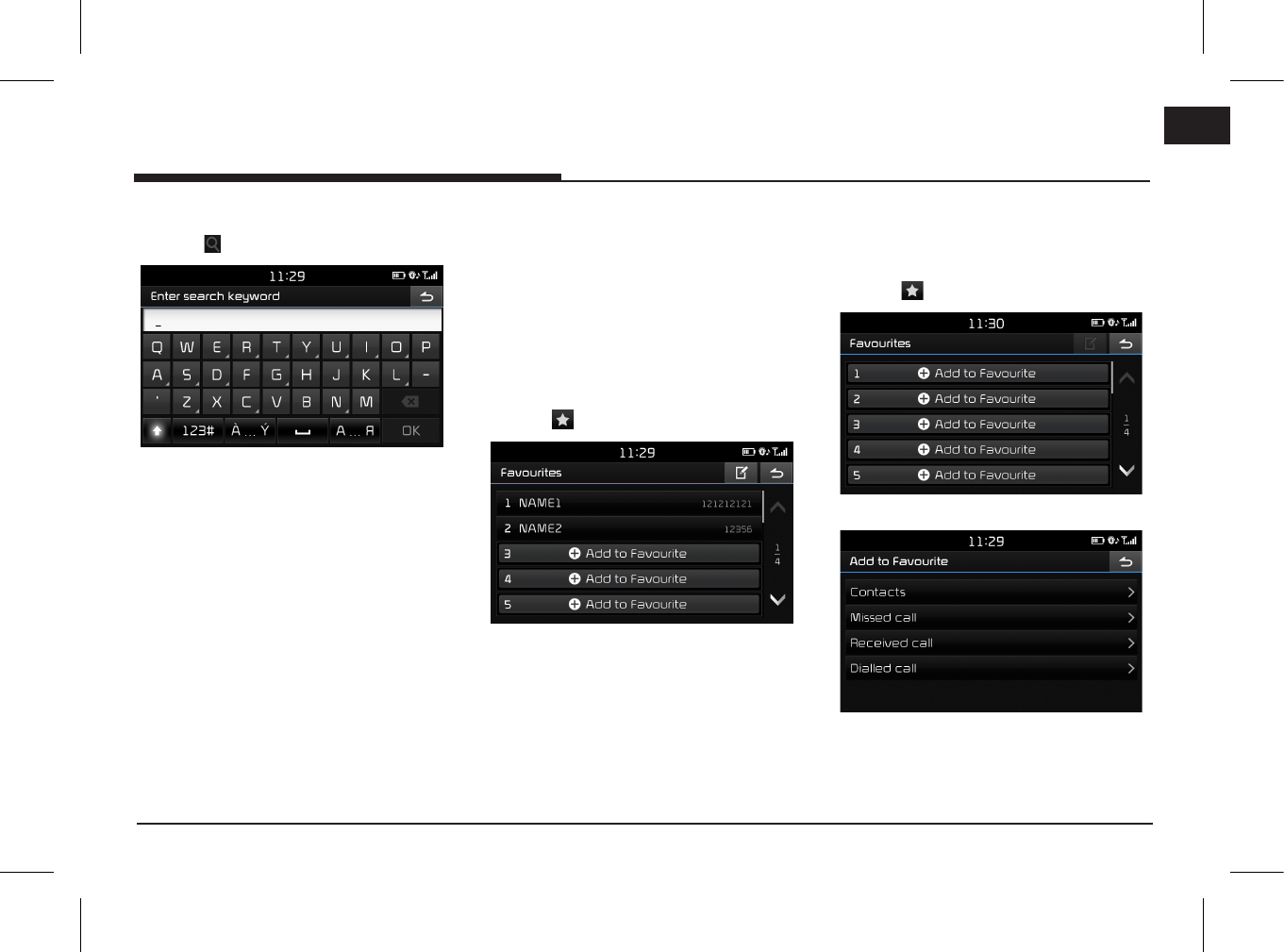
31
ENG
Bluetooth® Wireless Technology
Searching for contacts
1. Press [ ] on the contacts screen.
2. Enter the name, press [OK].
3. Select the contact you want to call.
Favourites
Calling Favourites
If the phone number has already been stored
in the Favourites, it can be easily called by
tapping on it.
First of all, add the phone number in the
Favourites. Refer to the “Adding as a Favourite”
on page 53.
1. Press [ ] on the phone screen.
<Favourite screen>
2. Select the desired favourite.
Adding as a Favourite
Up to 20 contacts can be added to [Favourites]
menu.
1. Press [ ] on the phone screen.
2. Press [Add to Favourite].
3. Select the desired items.
4. Select one of the contacts.
5. Enter favourite name, then, press [OK].
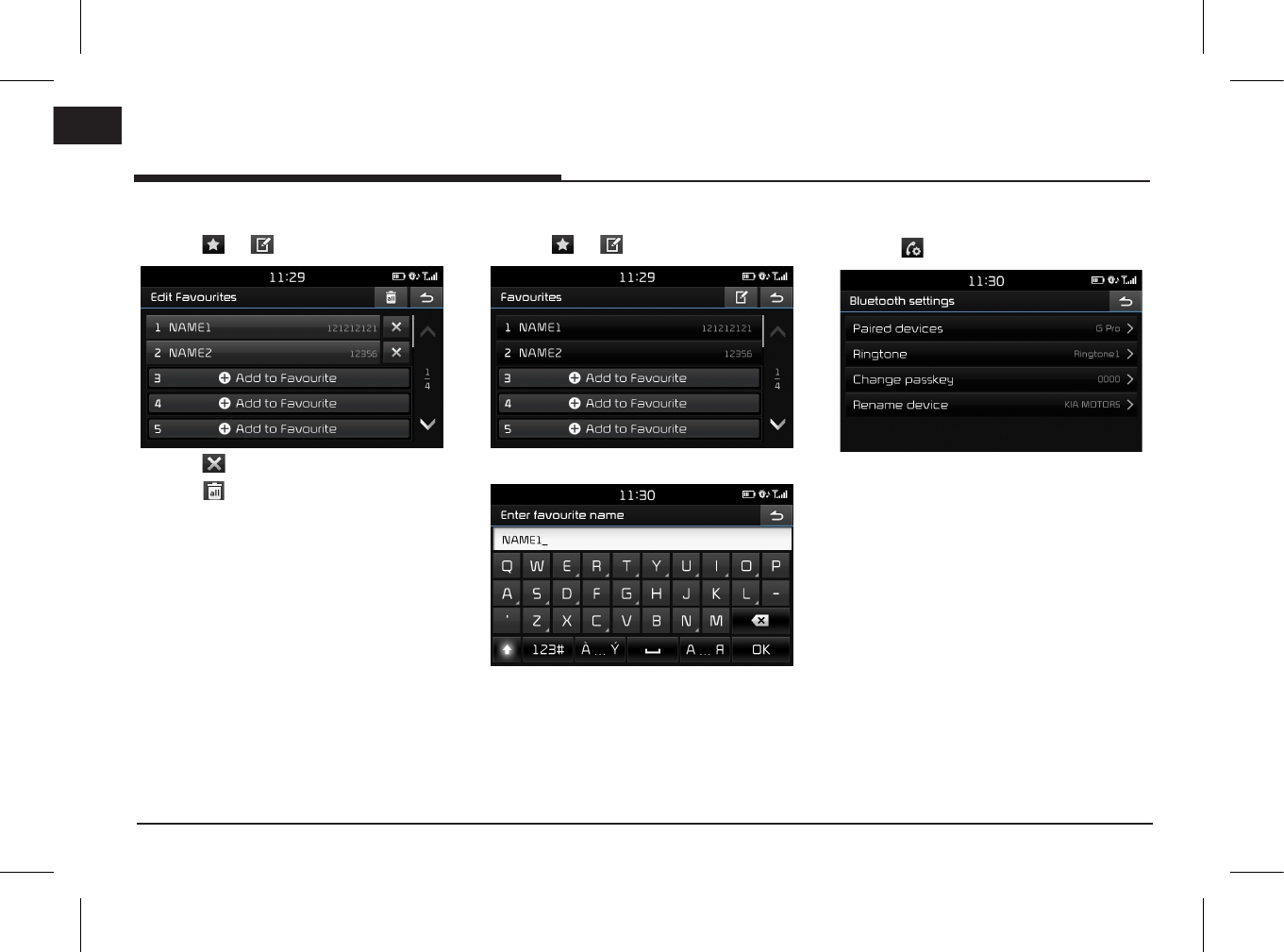
32
ENG
Bluetooth® Wireless Technology
Deleting favourites
1. Press [ ] > [ ] on the phone screen.
2. Press [ ] > [Yes].
Press [ ] > [Yes] to delete all favourites.
Changing the favourites name
1. Press [ ] > [ ] on the phone screen.
2. Press the desired contact.
3. Enter new name, then press [OK].
Bluetooth settings
1. Press [ ] on the phone screen.
2. For details refer to page 34 (“Bluetooth”).
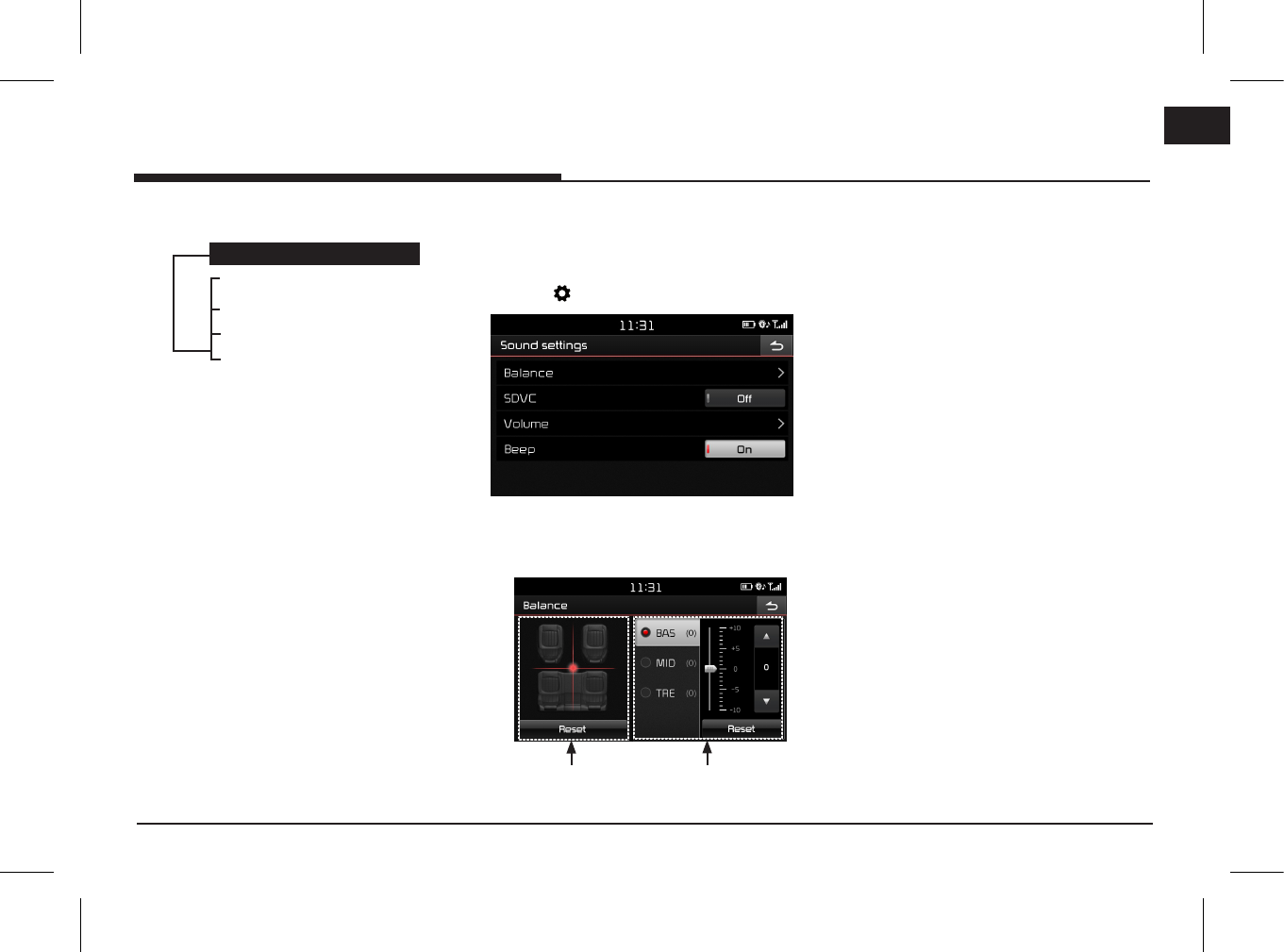
33
ENG
Settings
[Settings] menu overview Sound
This menu is used to adjust the sound eects
for the whole system.
1. Press [ ] > [Sound].
2. Select the desired items.
• [Balance]: Shows the sound control
options for Position and Bass/Mid/Treble.
-[Position]: Select the position of sound
focus. Press [Reset] to concentrate the
sound in the centre of the vehicle.
-[BAS/MID/TRE]: Press [w]/[s] to control
bass/mid/treble settings. Press [Reset]
to initialise the settings.
• [SDVC]: This menu allows you to
control automatically the audio volume
according to the speed of the vehicle.
Select [On] or [O ].
• [Volume]: Shows the volume control for
each option.
-[Phone]: Controls the volume related to
phone. Press [w]/[s].
-[Start up]: Controls the audio volume
when starting the system. Press [w]/[s].
-[Info]: Controls the volume related to
pop-up information. Press [w]/[s].
-Press [Reset] to initialise the settings.
• [Beep]:
This menu allows you to
play a
beep sound whenever you operate the
touch screen
.
Select [On] or [O ].
Settings
[Settings] menu
Sound
Display
Bluetooth
System
Position Bass/Mid/Treble
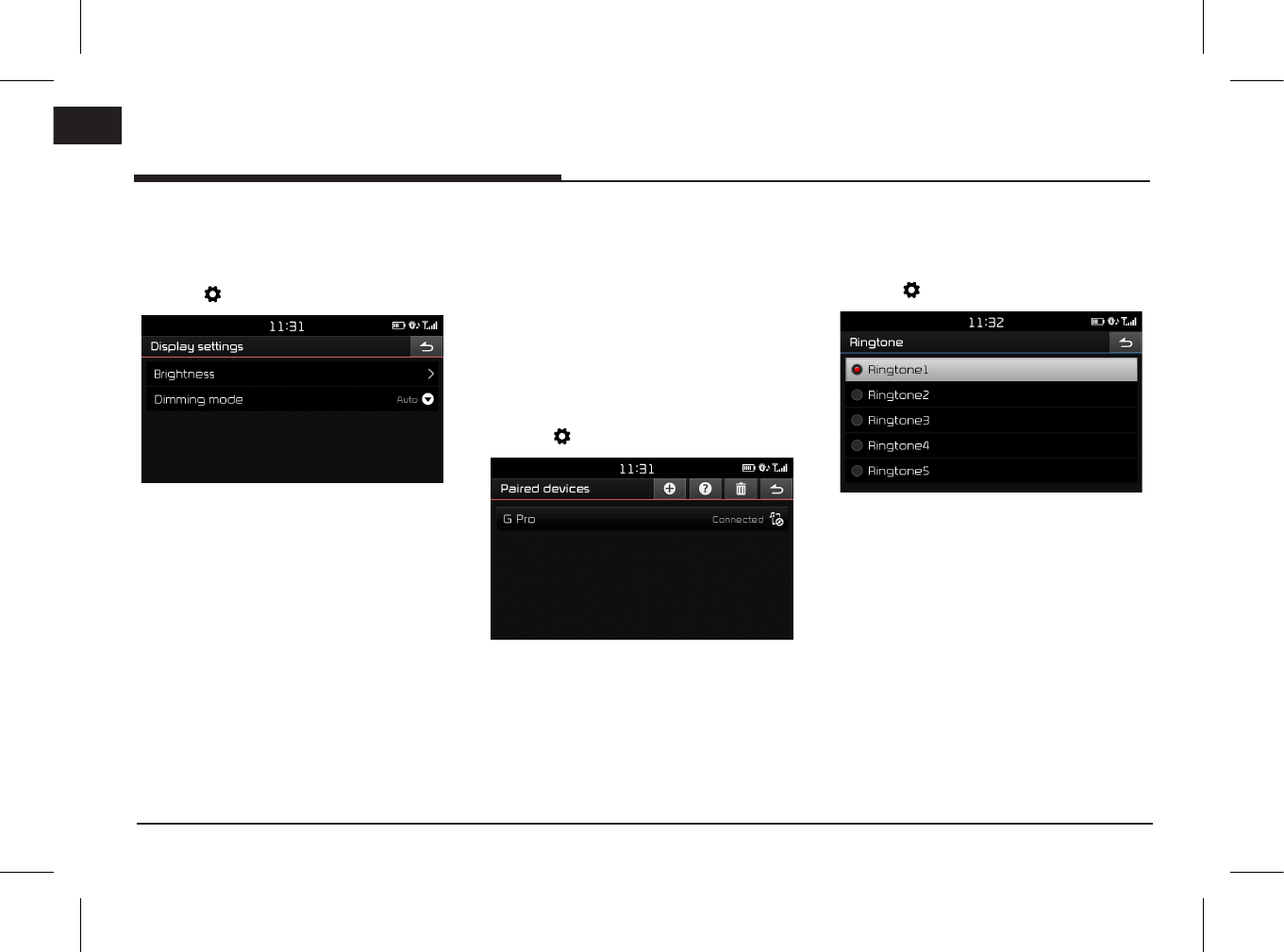
34
ENG
Settings
Display
This menu is used to adjust the brightness and
set the dimming mode for the whole system.
1. Press [ ] > [Display].
2. Select the desired items.
• [Brightness]: Select [Daylight] or
[Night], then Press [w/s] to control the
brightness. Press [Reset] to initialise the
settings. (Daytime brightness default is
“10”. Night time brightness default is “5”.)
• [Dimming mode]: Sets the display
brightness according to mode changes.
-[Auto]: Adjusts the brightness
automatically according to surrounding
brightness.
-[Daylight]: Always keeps the brightness
high regardless of surrounding
brightness.
-[Night]: Always keeps the brightness
low regardless of surrounding
brightness.
Bluetooth
This menu describes Bluetooth settings.
Paired devices
This menu is used to pair and connect the
head unit and a Bluetooth phone.
1. Press [ ] > [Bluetooth] > [Paired devices].
2. Follow the steps 2-5 of the "When pairing
additional device" on page 26.
Ringtone
The configured ringtone is played through the
vehicle speakers when you receive a call.
1. Press [ ] > [Bluetooth] > [Ringtone].
2. Select the desired ringtone.
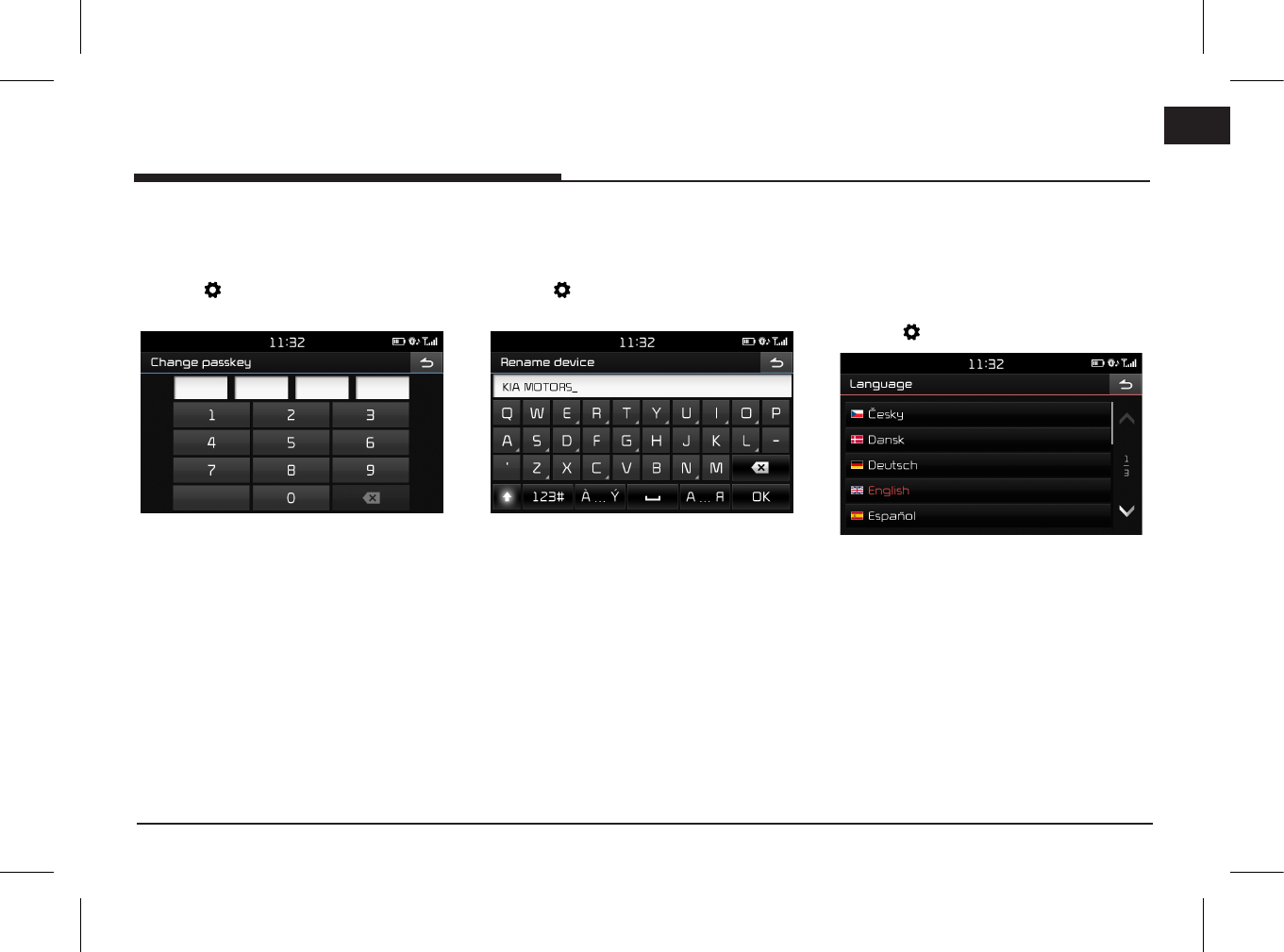
35
ENG
Settings
Change passkey
You can change the passkey used for Bluetooth
device authentication.
1. Press [ ] > [Bluetooth] > [Change
passkey].
2. Enter the passkey using the keypad.
, Note
The passkey is a 4-digit authentication code
used for a Bluetooth connection between the
mobile phone and car system. The default
passkey is set to 0000.
Rename device
You can change the Bluetooth device name of
the vehicle.
1. Press [ ] > [Bluetooth] > [Rename
device].
2. Enter the desired name using the keypad,
then press [OK].
, Note
The default device name is set to KIA MOTORS.
System
Language
This menu is used to set the language of the
system.
1. Press [ ] > [System] > [Language].
2. Select the desired language.

36
ENG
Settings
Keyboard
This menu is used to congure the keyboard
layout for each language.
Congured keyboard layouts are applied to all
input modes.
1. Press [ ] > [System] > [Keyboard].
2. Select the keyboard type.
Clock
This menu describes clock settings.
1. Press [ ] > [System] > [Clock].
2. Press the desired item.
• [Format]: This function is used to convert
the digital clock display between 12
hour/24 hour systems. Select [12h] or
[24h].
• [Standby screen]: This menu is used to
select the screen displayed when the
system power is turned o. Select [On] or
[O ].
• [Standby screen view]: This menu is used
to set the type of clock displayed when
the system power is turned o. Select
[Analogue] or [Digital].
Factory settings
This menu is used to reset all settings specied
by the user.
1. Press [ ] > [System] > [Factory settings].
2. Press the desired items.
• Press [All] to select all above mentioned
menus.
• [Phone]: Resets all settings related to
[Phone] menu.
• [Radio-Media-Sound]: Resets all settings
related to [Radio-Media-Sound] menu.
3. Press [ ].
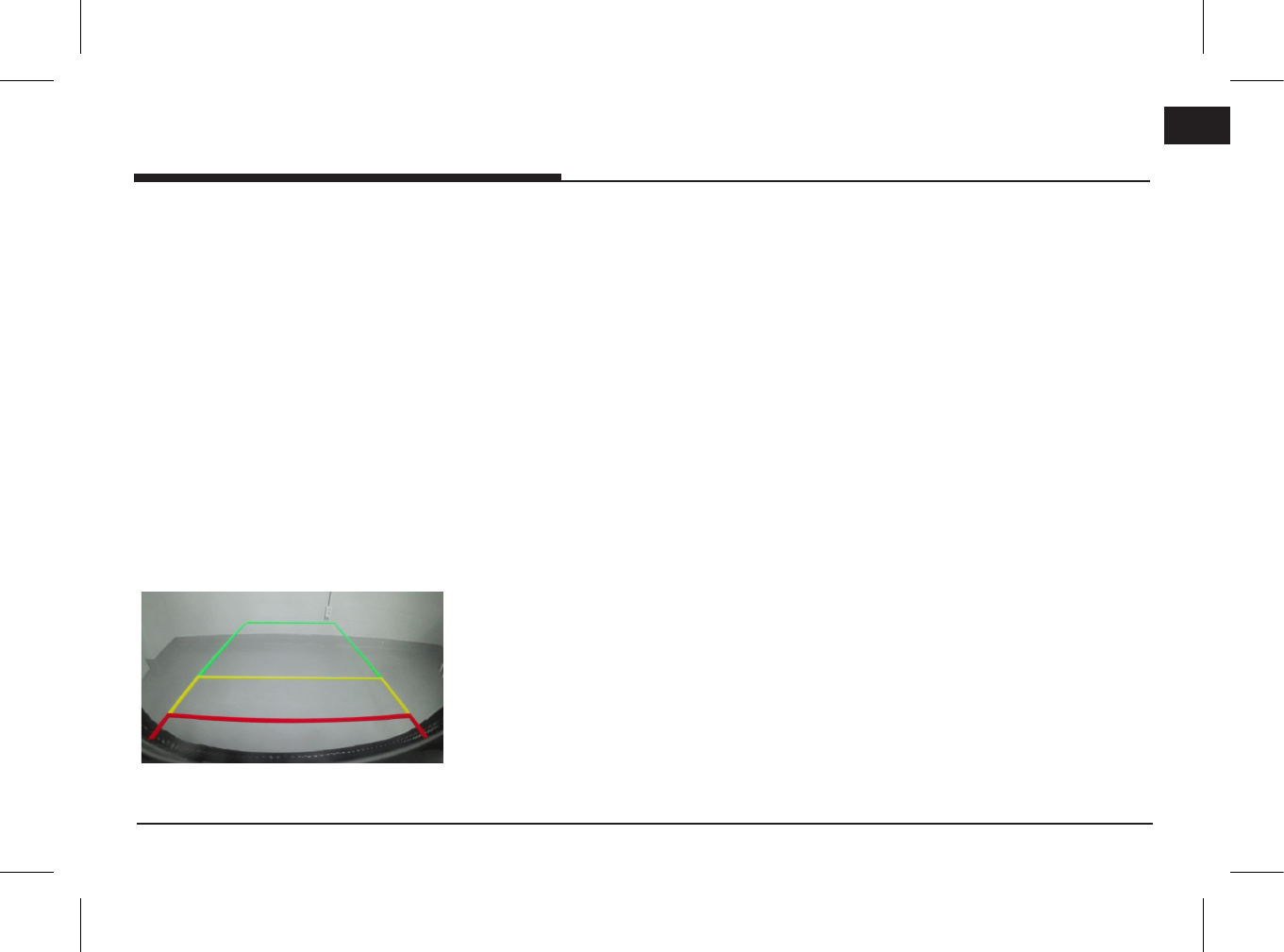
37
ENG
Using rear camera - Option
About Rear Camera
• Rear camera is an option for the customers
who selected the option.
• In this instrument, for the safety of the user,
a rear camera that can secure the rear view
during the backward driving is connected.
• After the vehicle is started, if the transmission
lever is put to R, the rear camera power
is automatically turned on, and the rear
camera starts to operate.
• If you change the transmission lever location
from R to another position, rear camera
stops.
Turning on the rear camera
1. When the vehicle is started, put the
transmission lever to R position.
, Note
Rear camera has an optical lens to secure
wide view, so there is a little dierence in the
distance shown on the screen. For safety,
make sure to check the rear, left, and right view
by yourself.
Using rear camera - Option
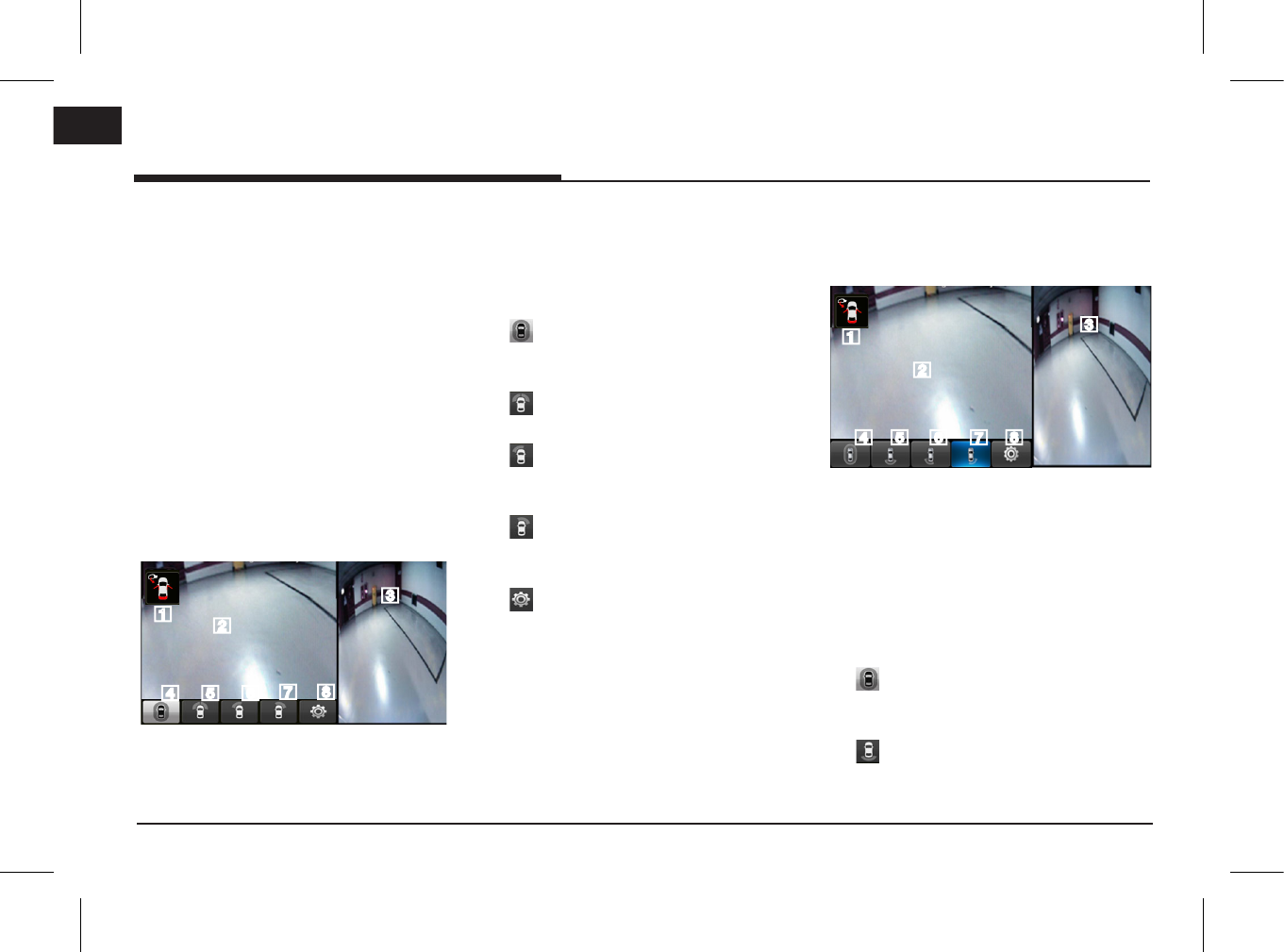
38
ENG
AVM (Around View Monitor) - Option
AVM (Around View Monitor) - Option
About AVM (Around View Monitor)
• AVM (Around View Monitor) is an option that
is provided to the customers who selected
the option.
• Through the 4 cameras installed in the
vehicle, it provides the front, rear, left and
right views of the vehicle.
• While vehicle is started, if gear is put to R
position, it automatically starts AVM (Around
View Monitor).
• If gear is changed from R to P position, AVM
(Around View Monitor) operation stops.
Operating front AVM
After starting the vehicle, if you press [AVM]
after putting gear to N or D, front AVM starts.
a
Warning display: driver seat/front
passenger seat door and side mirror, and
trunk open status are displayed.
b
Front camera screen: screen of the front of
the vehicle is displayed through camera.
c
AVM side camera screen: According to the
selected display contents, it displays AVM
or left or right side screen.
d
(Front + AVM display): It displays
vehicle’s front screen and all direction
(AVM) screens at the same time.
e
(Front display): It only displays vehicle’s
front screen.
f
(Front + left side display): It displays the
vehicle’s front screen and left front screen
at the same time.
g
(Front + right side display): It displays
the vehicle’s front screen and right side
screen at the same time.
h
(AVM setting): It displays AVM setting
menu.
, Note
While front AVM is running, if you drive at
about 20 km/h or more, AVM is turned o. At
this state, even if you drive at about 20 km/h or
less, AVM is remained at OFF state.
Operating rear AVM
After starting the vehicle, if you put gear at R
position, rear AVM starts.
a
Warning display: driver seat/front
passenger seat door and side mirror, and
trunk open status are displayed.
b
Rear camera screen: screen of the rear of
the vehicle is displayed through camera.
c
AVM side camera screen: According to the
selected display contents, it displays AVM
or left or right side screen.
d
(Rear + AVM display): It displays
vehicle’s rear screen and all direction (AVM)
screens at the same time.
e
(Rear display): It only displays vehicle’s
rear screen.
d e f g h
a
b
c
d e f g h
ab
c
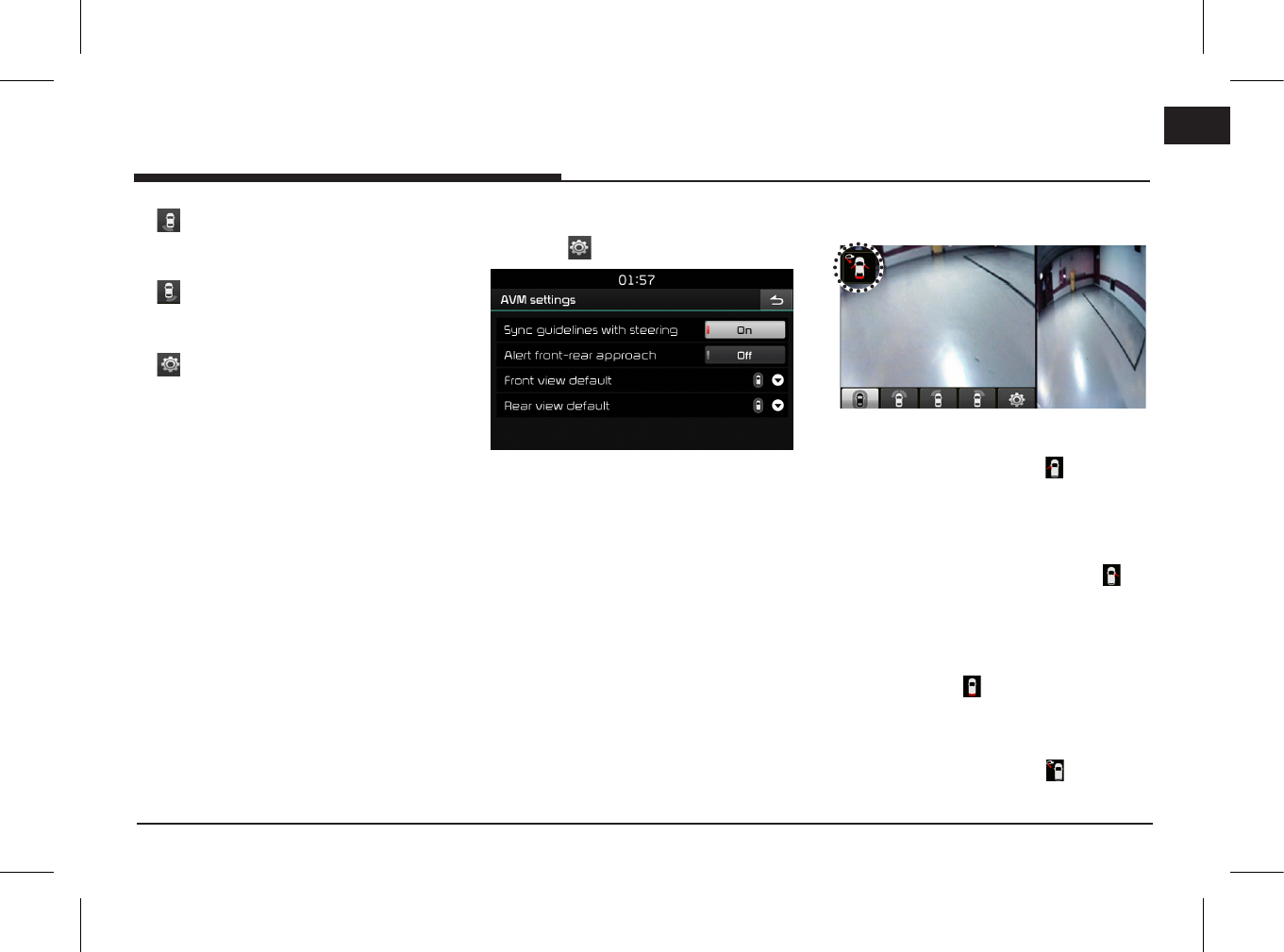
39
ENG
AVM (Around View Monitor) - Option
f
(Rear + left side display): It displays the
vehicle’s rear screen and left rear screen at
the same time.
g
(Rear + right side display): It displays
the vehicle’s rear screen and right rear
screen at the same time.
h
(AVM setting): It displays AVM setting
menu.
, Note
AVM (Around View Monitor) camera has an
optical lens to secure wide view, so there is a
little dierence in the distance shown on the
screen. For safety, make sure to check the rear,
left, and right view by yourself.
AVM setting
By pressing [ ], you can adjust AVM settings.
• [Sync guidelines with steering]: Sets the
guide line steering interface on/off.
• [Alert front-rear approach]: Sets the warning
for approaching an obstacle on/off.
• [Front view default]: Sets the front camera’s
screen as initial view. (Around view, front
view, driver seat side front, and front
passenger seat side front)
• [Rear view default]: Sets the rear camera’s
screen as initial view. (Around view, rear view,
driver seat side rear, and front passenger
seat side rear)
Warning display
Driver's door open indicator
When the driver’s door is open, “ ” (red colour
on left door) indicator is displayed on the top
left of the screen.
Front passenger's door open indicator
When the front passenger’s door is open, “ ”
(red colour on right door) indicator is displayed
on the top left of the screen.
Trunk open indicator
When trunk is open,“ ”(red colour on trunk)
indicator is displayed on the top left of the screen.
Side mirror folding indicator
When the side mirror is folded, “ ” (side
mirror) indicator is displayed on the top left of
the screen.

40
ENG
Before thinking there is a product defect
The current car position as shown on the
navigation may differ from the actual
position under the following conditions�
• When driving on Y-shaped roads with
narrow angles, the current position may be
displayed in the opposite direction.
• Within city streets, the current position may
be displayed on the opposite side or on an
o-road position.
• When changing the zoom level from
maximum to a dierent level, the current
position may become displayed on a
dierent road.
• If the vehicle is loaded onto a ferry or a car
transport vehicle, the current position may
become stalled on the last position prior to
loading.
• When entering a road after passing an
underground parking structure, building
parking structure or roads with many
rotations.
• When driving in heavy trac with frequent
starts and stops.
• When driving under slippery conditions,
such as heavy sand, snow, etc..
• When the tires have recently been replaced
(Especially upon use of spare or studless
tires).
• When using tires of improper size.
• When the tire pressure for the 4 tires are
different.
• When the replacement tire is worn or used
(Especially studless tires having passed a
second season).
• When driving near high-rise buildings.
• When a roof carrier has been installed.
• When a long distance route is calculated
while driving on an expressway, in such
cases, continued driving will automatically
enable the system to conduct map
matching or use updated GNSS information
to provide the current position (In such
cases, up to several minutes may be
required).
Correct route guidance may not occur
due to search conditions or driving
position� The following occurrences are
not malfunctions:
• Guidance to go straight may be given while
driving on a straight road.
• Guidance may not be given even when
having turned at an intersection.
• There are certain intersections in which
guidance may not occur.
• A route guidance signaling for a u-turn may
occur in some No u-turn intersections.
• Route guidance signaling entrance into a
No-entry zone may occur (No-entry zone,
road under construction, etc.).
• Guidance may be given to a position that is
not the actual destination if roads to reach
the actual destination do not exist or are too
narrow.
• Faulty voice guidance may be given if the
vehicle breaks away from the designated
route. (e.g. if a turn is made at an intersection
while the navigation provided guidance to
go straight.)
Before thinking there is a product defect

41
ENG
Before thinking there is a product defect
These situations may occur after
conducting route calculation� The
following occurrences are not
malfunctions:
• Guidance may be given to a position
diering from the current position when
turning at an intersection.
• When driving in high speeds, route
recalculation may take a longer period of
time.
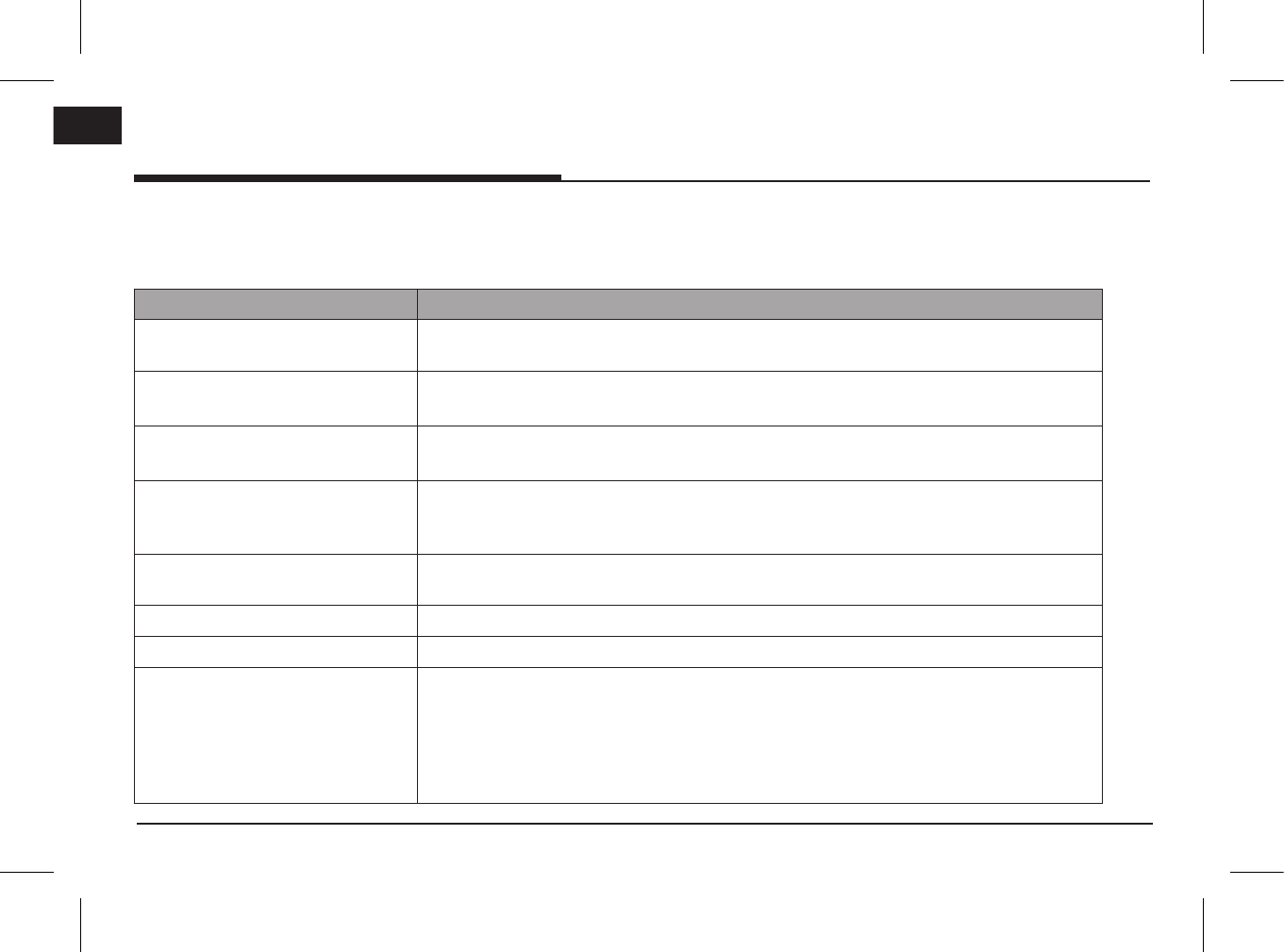
42
ENG
Before thinking there is a product defect
1. Errors which occur during the operation or installation of the device may be mistaken as a malfunction of the actual device.
2. If you are having problems with the device, try the suggestions listed below.
3. If the problems persist, contact your dealer.
Problem Possible Cause
There are small red, blue or green dots
on the screen.
Because the LCD is manufactured with technology requiring high point density, a pixel or lighting
deciency may occur within 0.01% of total pixels.
The sound or image is not working. • Has the Switch for the vehicle been turned to [ACC] or [ON]?
• Has the SYSTEM been turned OFF?
The screen is being displayed but
sound is not working.
• Has the volume been set to a low level?
• Has the volume been muted?
When the power is turned on, the
corners of the screen are dark.
• The display appearing somewhat dark after prolonged periods of use is normal with LCD panels.
It is not a malfunction.
• If the screen is very dark, contact your nearest dealer for assistance.
Sound is working from only one
speaker.
Are the positions of Fader or Balance sound controls adjusted to only one side?
Sound does not work in AUX mode. Are the audio connector jacks fully inserted into the AUX terminal?
The external device is not working. Is the external device connected with a standard connector cable?
When turning power on, the most
recent mode screen is not displayed.
Within modes that play les by reading external sources, such as USB, iPod or Bluetooth® streaming
mode, the most recently played mode screen prior to turning o power may not properly load.
• If the corresponding device is not connected, the mode operated prior to the most recent mode
will operate.
• If the previous mode still cannot be properly played, the mode operated prior to that will
operate.
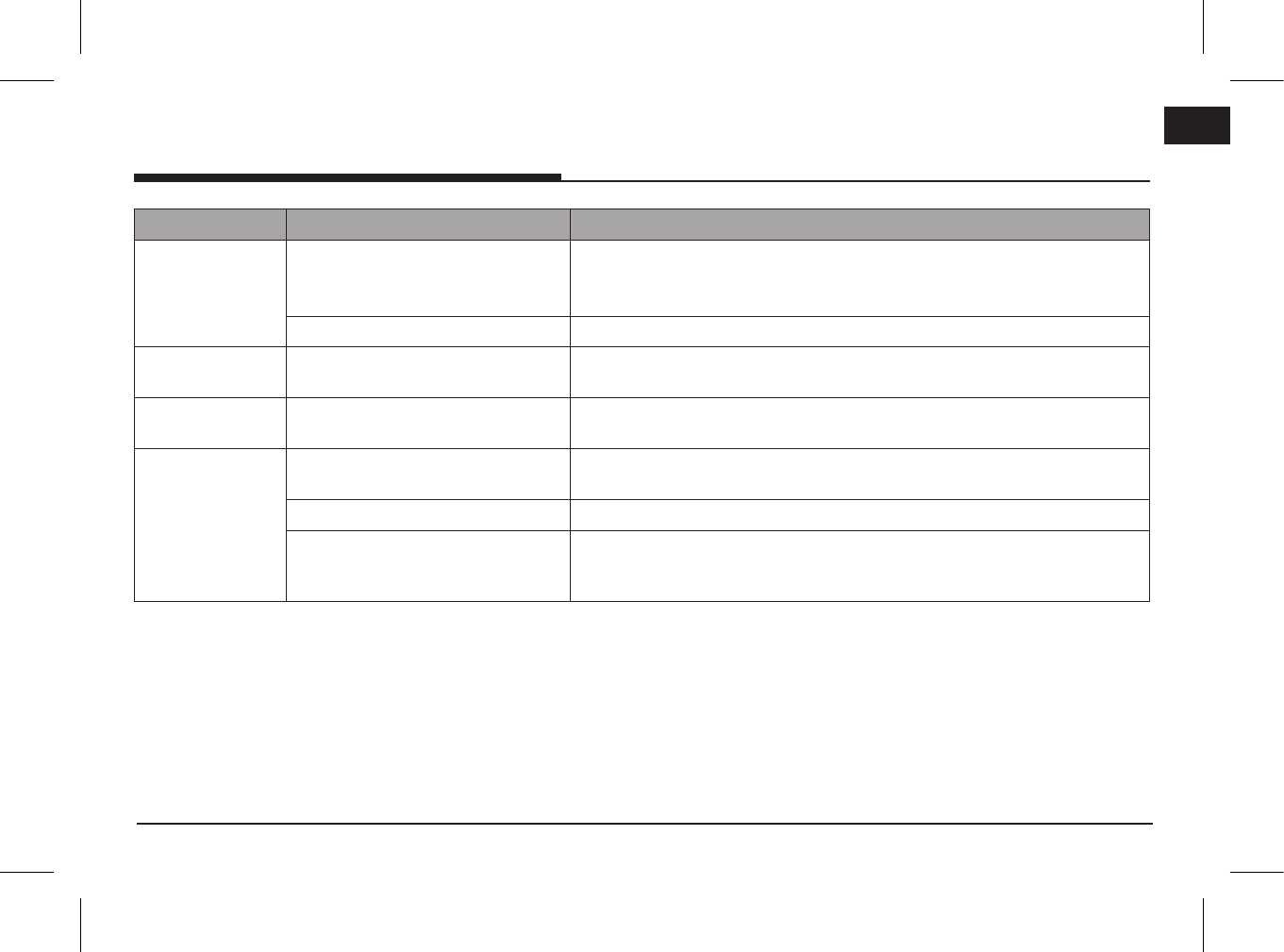
43
ENG
Troubleshooting
Problem Possible Cause Countermeasure
The power does not
turn on.
The fuse is disconnected. • Replace with a suitable fuse.
• If the fuse is disconnected again, please contact your point of purchase or service
center.
Device is not properly connected. Check to see that the device has been properly connected.
The system does
not play.
The vehicle battery is low. Charge the battery if the problem persists, contact your point of purchase or service
center.
The image colour/
tone quality is low.
The brightness, saturation, and contrast
levels are not set properly.
Properly adjust the brightness, saturation, and contrast levels through Display
Setup.
Sound does not
work.
The volume level is set to the lowest
level.
Adjust the volume level.
The connection is not proper. Check to see that the device has been properly connected.
The device is currently fast-forwarding,
rewinding, scanning or playing in slow
mode.
The sound will not work when the device is fast-forwarding, rewinding, scanning or
playing in slow mode.
Troubleshooting
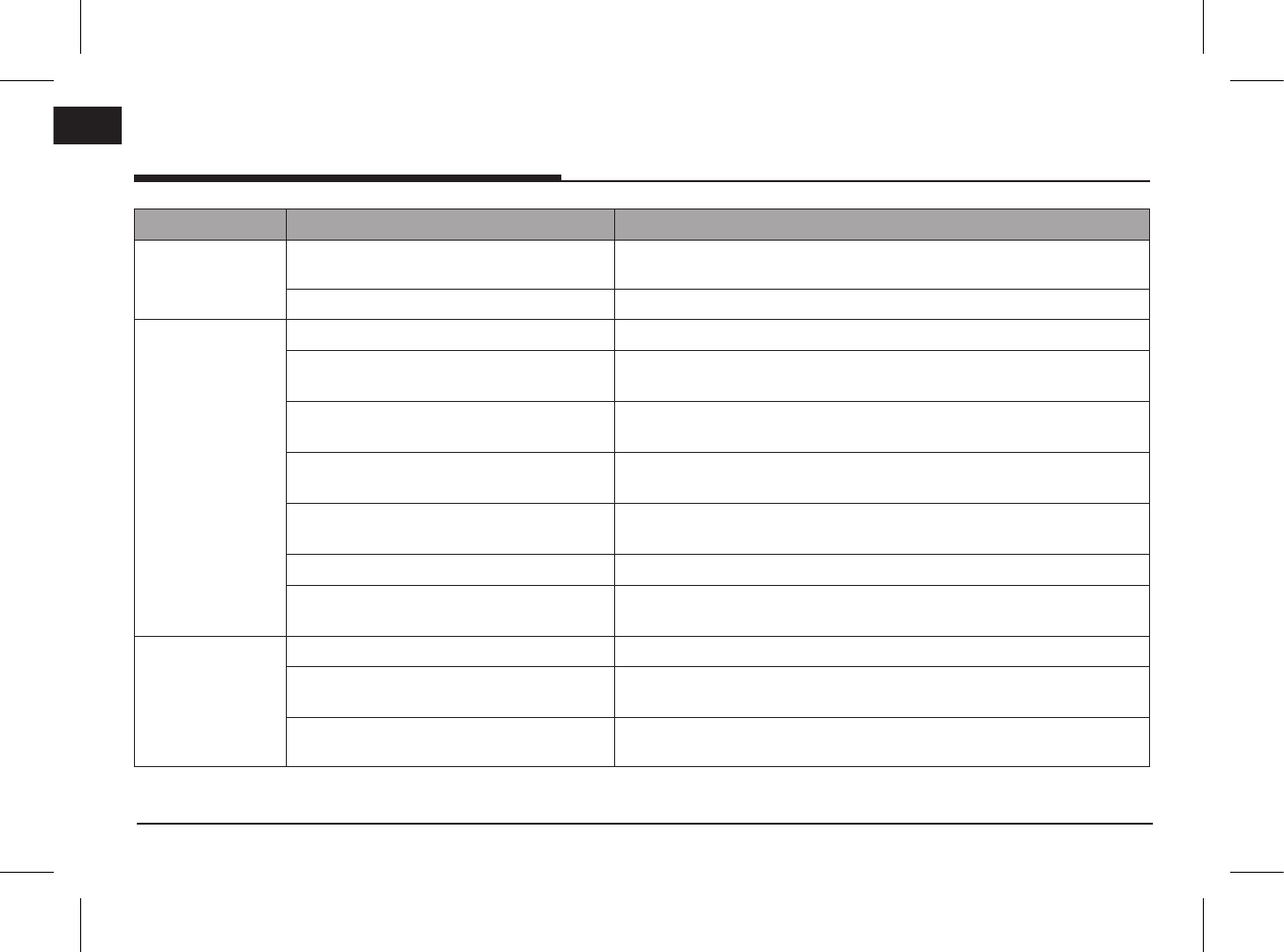
44
ENG
Troubleshooting
Problem Possible Cause Countermeasure
The sound or image
quality is low.
Vibration is occurring from where the
conversion switch has been installed.
The sound may be short circuited and the image distorted if the device
vibrates.
Image colour/tone quality is low. The device will return to normal once vibrations stop.
The USB does not
work.
USB memory is damaged. Please use after formatting the USB into FAT 12/16/32 format.
USB memory has been contaminated. Remove any foreign substances on the contact surface of the USB memory
and multimedia terminal.
A separately purchased USB HUB is being
used.
Directly connect the USB memory with the multimedia terminal on the
vehicle.
A USB extension cable is being used. Directly connect the USB memory with the multimedia terminal on the
vehicle.
A USB which is not a Metal Cover Type USB
Memory is being used.
Use standard USB Memory.
An HDD type, CF, SD Memory is being used. Use standard USB Memory.
There are no music les which can be played. Only MP3, WMA le formats are supported. Please use only the supported
music le formats.
The iPod is not
recognised even
though it has been
connected.
There are no titles which can be played. Use iTunes to download and save MP3 les into the iPod.
The iPod rmware version has not been
properly updated.
Use iTunes to update the rmware version and reconnect the iPod with the
device.
The iPod device does not recognise
downloads.
Reset the iPod and reconnect with the device.
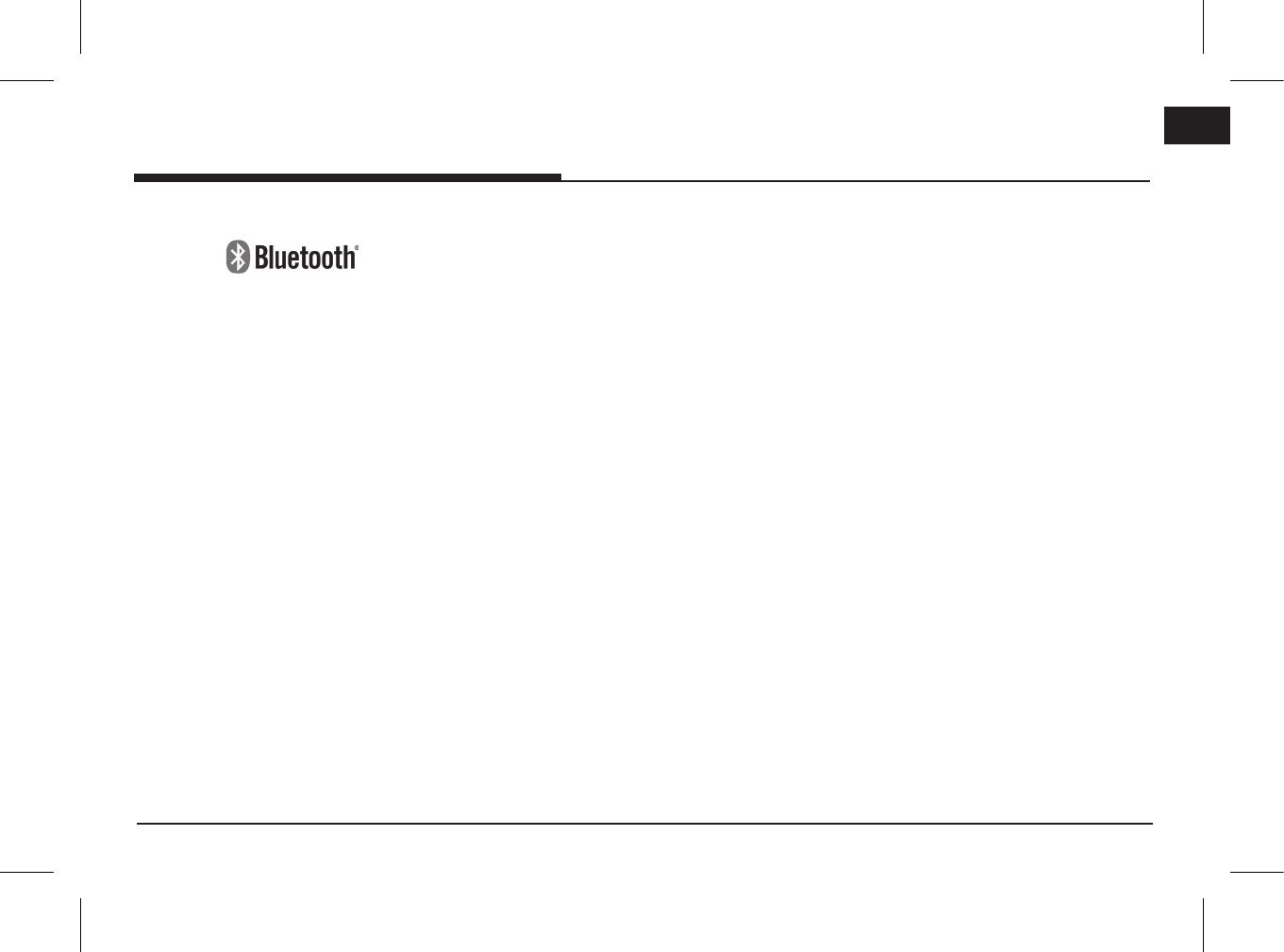
45
ENG
Trademarks and Licenses
Bluetooth® Wireless Technology
The Bluetooth Wireless Technology word mark
and logos are registered trademarks owned by
Bluetooth Wireless Technology SIG, Inc.
iPod®
iPod® is a registered trademark of Apple Inc.
OPEN SOURCE SOFTWARE NOTICE
To obtain the source code under GPL, LGPL,
MPL and other open source licenses, that is
contained in this product, please visit http://
opensource.lge.com.
In addition to the source code, all referred
license terms, warranty disclaimers and
copyright notices are available for download.
LG Electronics will also provide open source
code to you on CD-ROM for a charge covering
the cost of performing such distribution (such
as the cost of media, shipping and handling)
upon email request to opensource@lge.com.
This oer is valid for three (3) years from the
date on which you purchased the product.
Trademarks and Licenses
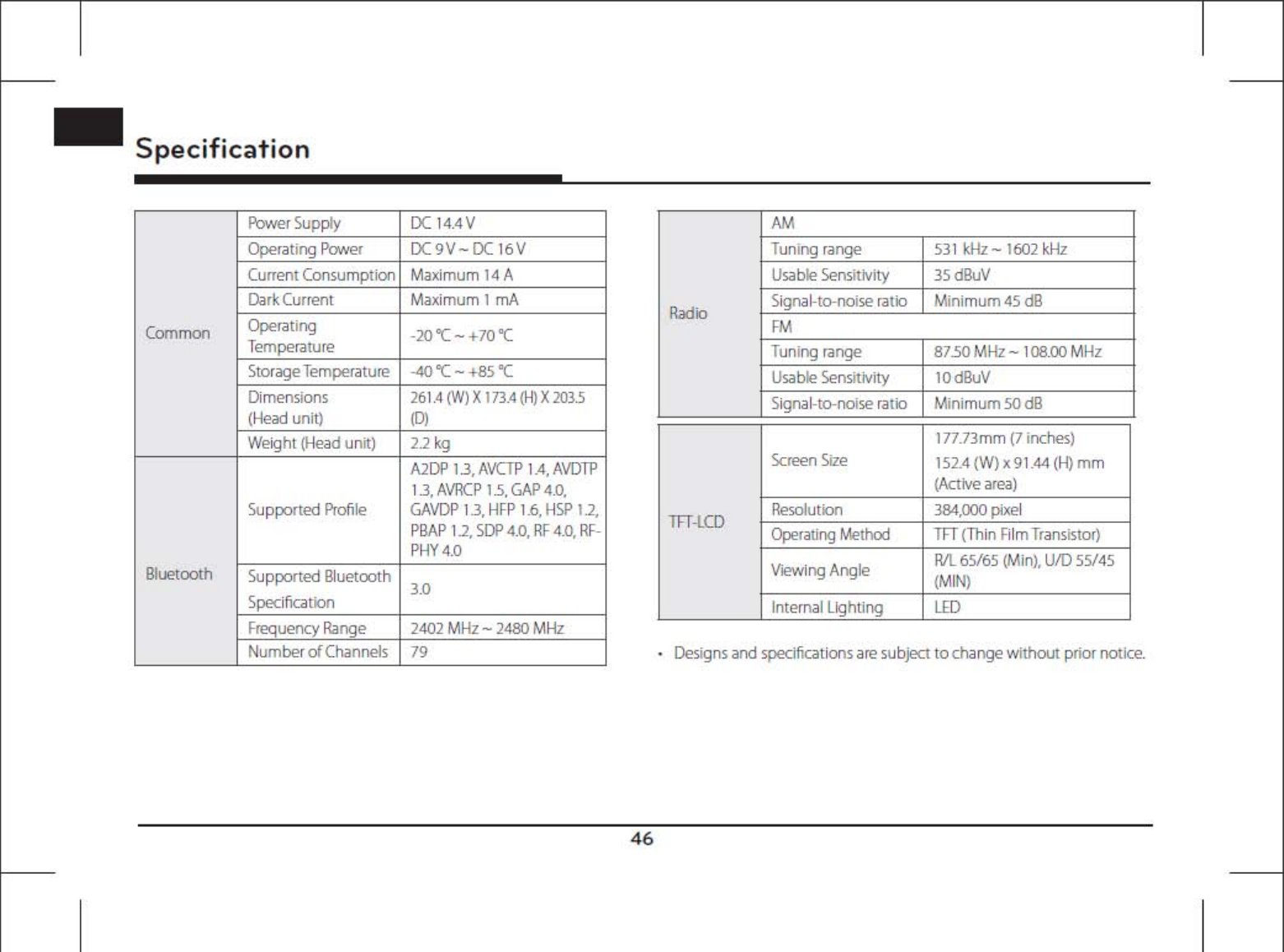

LIMITED WARRANTY
ORIGINAL NAVIGATION HEAD UNIT SUPPLIED BY VEHICLE DEALER
Product :
Product No. :
WHAT THIS WARRANTY COVERS
1. Vehicle Dealer Shop ("Dealer") warrants to you that the Hardware will be free from defects in workmanship and materials under normal use
("Defects") for a period of three (3) years/60,000km from the date that the Hardware was first installed by DEALER ("Warranty Period"). During
the Warranty Period the Hardware will be repaired or replaced at DEALER's choice ("Limited Warranty") without charge to you for either parts
or labor. This Limited Warranty covers the replacement of the head unit including of the Hardware only.
WHAT THIS WARRANTY DOES NOT COVER
2. The Limited Warranty does not apply to normal wear and tear, does not apply when the Hardware is opened or repaired by someone
not authorized by DEALER and does not cover repair or replacement of any Hardware or part thereof damaged by: misuse, moisture
liquids, proximity or exposure to heat and accident, abuse, non-compliance with the instructions supplied with the Hardware, neglect
or misapplication. The Limited Warranty does not cover physical damage to the surface of the Hardware. This Limited Warranty does not
cover any software that may accompany or be installed on the Hardware. The Limited Warranty does not cover the installation, removal or
maintenance of the Hardware or any costs related herewith.

HOW TO MAKE A WARRANTY CLAIM
3. In order to make a claim of a Defect, you must contact DEALER. If a defect arises and a valid claim under this Limited Warranty is received
by DEALER after the first 3yrs/60,000km of the Warranty Period, DEALER is entitled to charge you for any reasonable shipping and handling
costs made in connection with the repair or replacement of the Hardware. You must comply with any other return procedures stipulated by
DEALER, if any.
DEALER LIMITED WARRANTY
YOUR LEGAL RIGHTS
4. Some countries may not allow the exclusion or limitation of damages. If any part of this Limited Warranty is held to be invalid or
unenforceable, the remainder of the Limited Warranty shall nonetheless remain in full force and effect.
5. This Limited Warranty is the only express warranty made to you and is provided in place of any other express warranties or similar obligations
(if any) created by any advertising, documentation, packaging, or other communications.
6. Except for the Limited Warranty and to the maximum extent permitted by applicable law, DEALER and its suppliers provide the Hardware
"AS IS AND WITH ALL FAULTS", and hereby disclaim all other warranties and conditions, whether express, implied or statutory, including, but
not limited to, any (if any) implied warranties, duties or conditions of satisfactory quality, of fitness for a particular purpose, of reliability or
availability, of accuracy or completeness of responses, of results, of workmanlike effort, of lack of viruses, and of reasonable care and skill, all
with regard to the Hardware, and the provision of or failure to provide support or other services, information, software, and related content
through the Hardware or otherwise arising out of the use of the Hardware. Also, there is no warranty or condition of quiet enjoyment, quiet
possession, or non-infringement with regard to the Hardware.
7. This Limited Warranty does not affect any legal rights under applicable national legislation governing the sale of consumer goods.
8. This Limited Warranty cannot be transferred to any other person.

LIMITATION OF LIABILITY
9. Neither DEALER nor its suppliers shall be liable to you or to any third party for any damages either direct, indirect, incidental, consequential
or otherwise (including in each case, but not limited to, damages for the inability to use the equipment or access data, loss of data, loss of
business, loss of profits, business interruption or the like) arising out of the use of or inability to use the Hardware even if DEALER has been
advised of the possibility of such damages.
10. Notwithstanding any damages that you might incur for any reason whatsoever, the entire liability of DEALER and any of its suppliers shall be
limited to the amount actually paid by you for the Hardware.
11. DEALER shall not be liable for
(I) any fraud on the part of its employees and/or agents; or
(I) any fraudulent misrepresentation on the part of its employees and/or agents.
12. Notwithstanding the above, neither party's liability for death or personal injury resulting from its own negligence shall be limited.
(Federal Communications Commission, FCC)
Thisdevicecomplieswithpart15oftheFCCRules.Operationissubjecttothefollowing
twoconditions:(1)Thisdevicemaynotcauseharmfulinterference,and(2)thisdevicemust
acceptanyinterferencereceived,includinginterferencethatmaycauseundesired
operation.
ThisequipmenthasbeentestedandfoundtocomplywiththelimitsforaClassBdigital
device,pursuanttoPart15oftheFCCRules.Theselimitsaredesignedtoprovide
reasonable
protectionagainstharmfulinterferenceinaresidentialinstallation.Thisequipment
generates,uses,andcanradiateradiofrequencyenergyand,ifnotinstalledandusedin
accordancewiththeinstructions,maycauseharmfulinterferencetoradiocommunications.
However,thereisnoguaranteethatinterferencewillnotoccurinaparticularinstallation.If
thisequipmentdoescauseharmfulinterferencetoradioortelevisionreception,whichcan
bedeterminedbyturn‐ingtheequipmentoffandon,theuserisencouragedtotryto
correcttheinterferencebyoneormoreofthefollowingmeasures:
• Reorientorrelocatethereceivingantenna.
• Increasetheseparationbetweentheequipmentandreceiver.
• Connecttheequipmentintoanoutletonacircuitdifferentfromthattowhichthe
receiverisconnected.
• Consultthedealeroranexperiencedradio/TVtechnicianforhelp.
Anychangesormodificationsinconstructionofthisdevicewhicharenotexpressly
approvedbythepartyresponsibleforcompliancecouldvoidtheuser’sauthoritytooperate
theequipment
Thisequipmentshouldbeinstalledandoperatedwithminimum20cmbetweenthe
radiatorandyourbody

Motrex Brazil Ltd
E-mail : survice@motrex.co.kr
Support - HOTLINE